
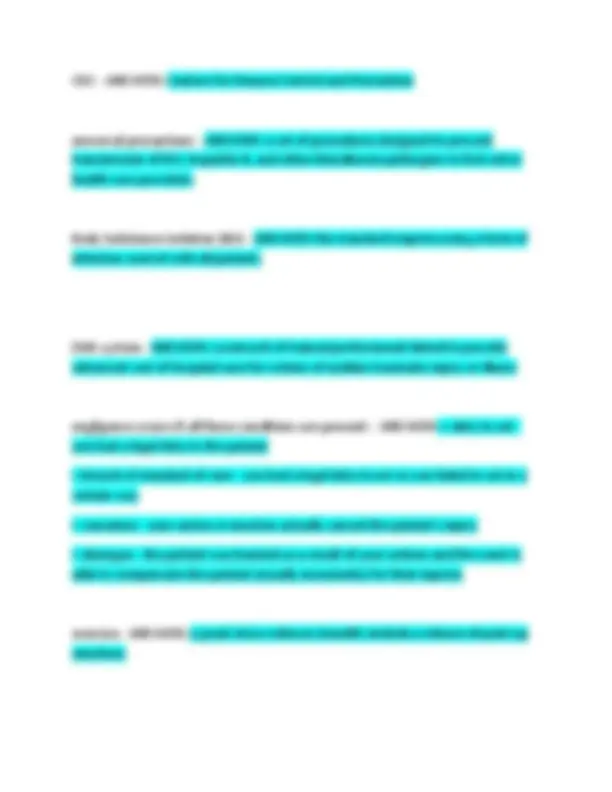
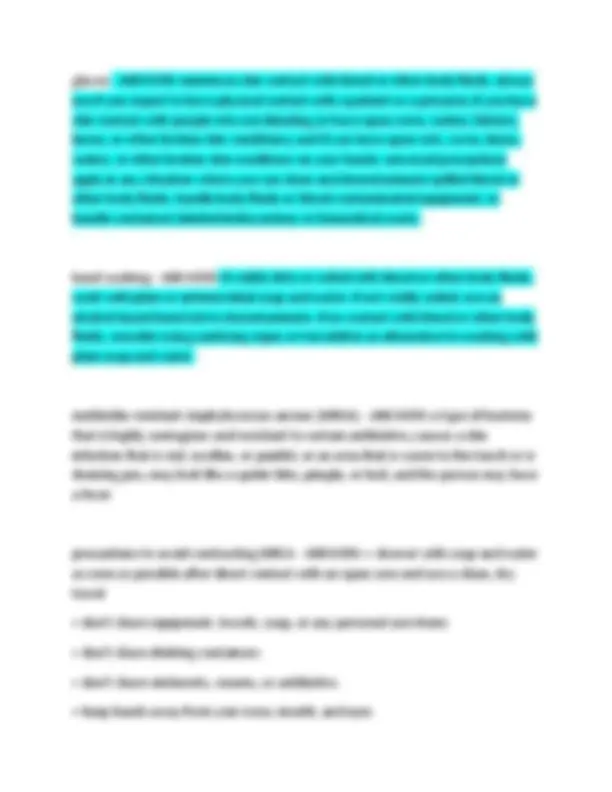
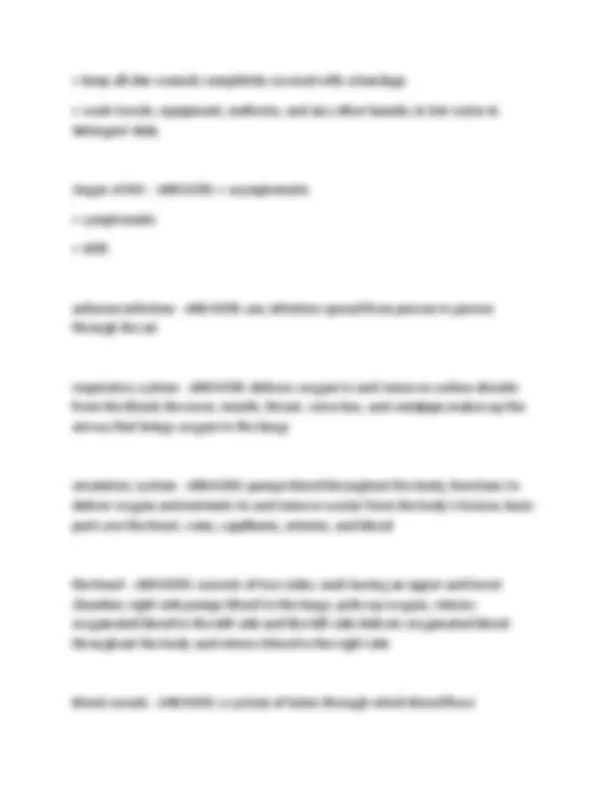
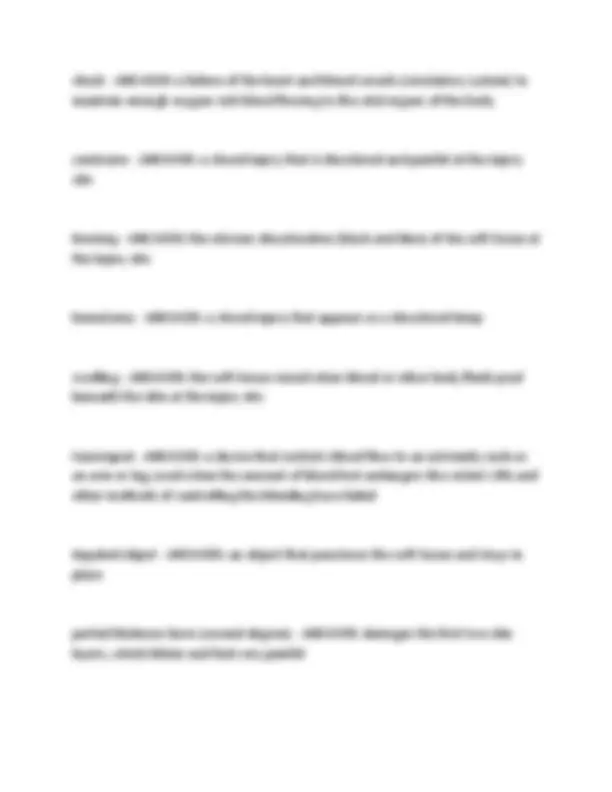
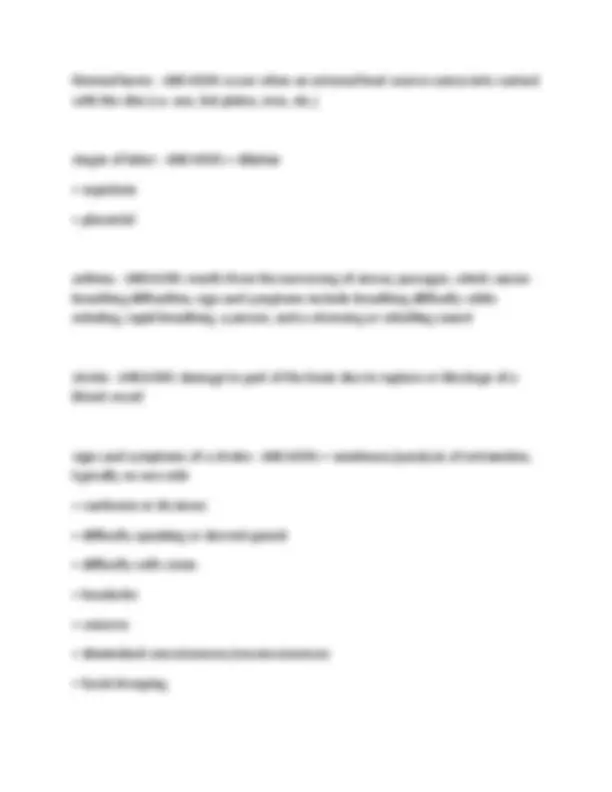
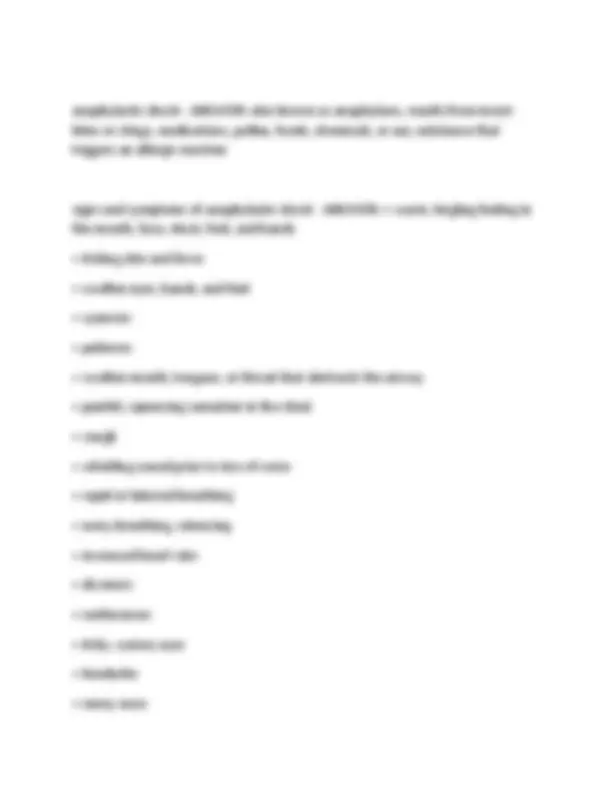
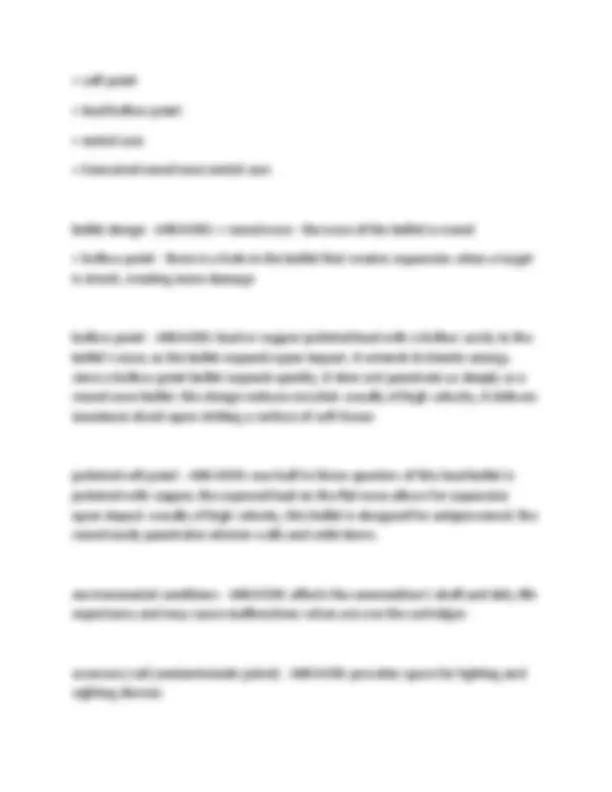
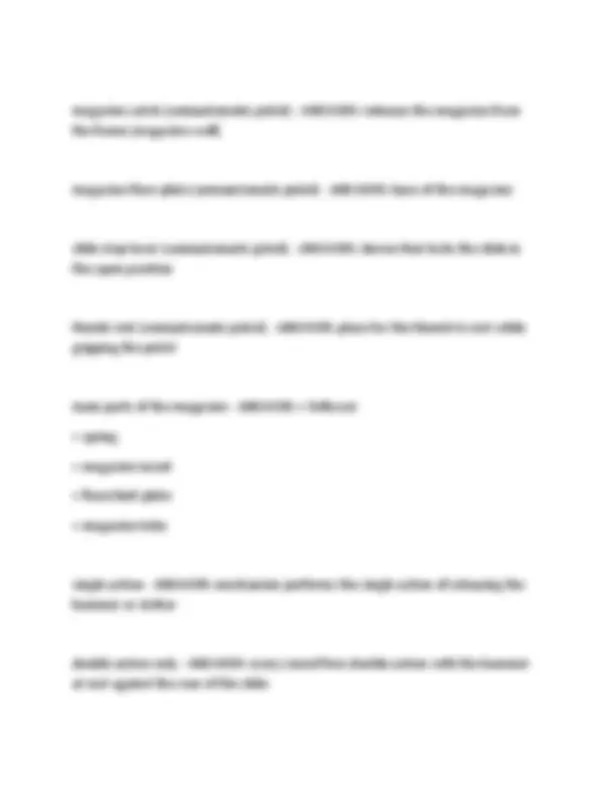
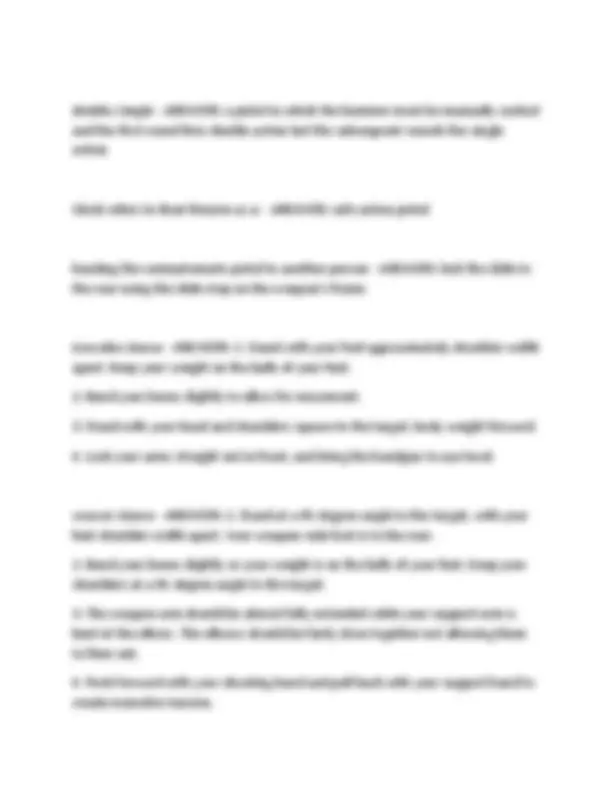
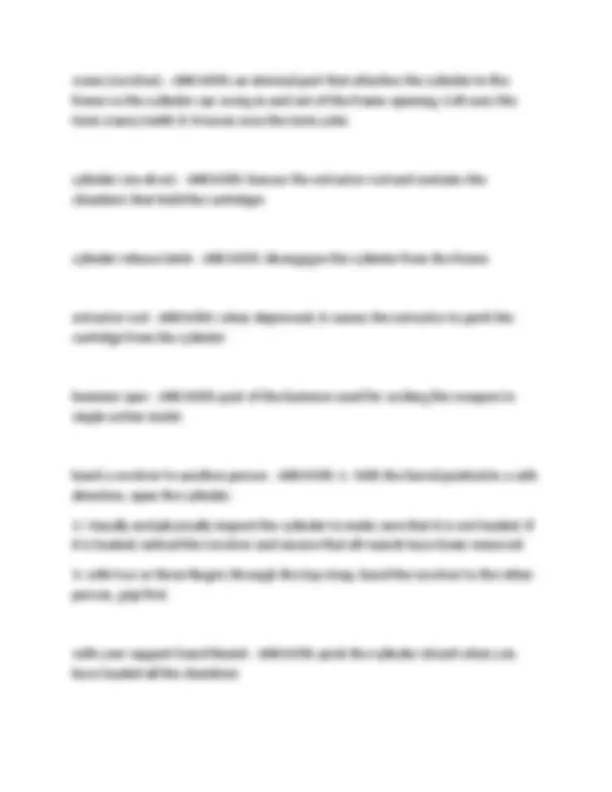
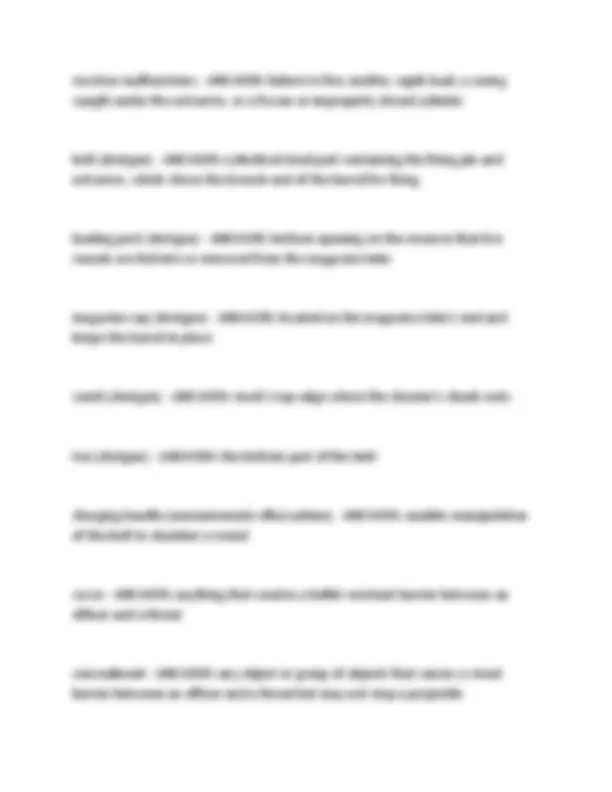
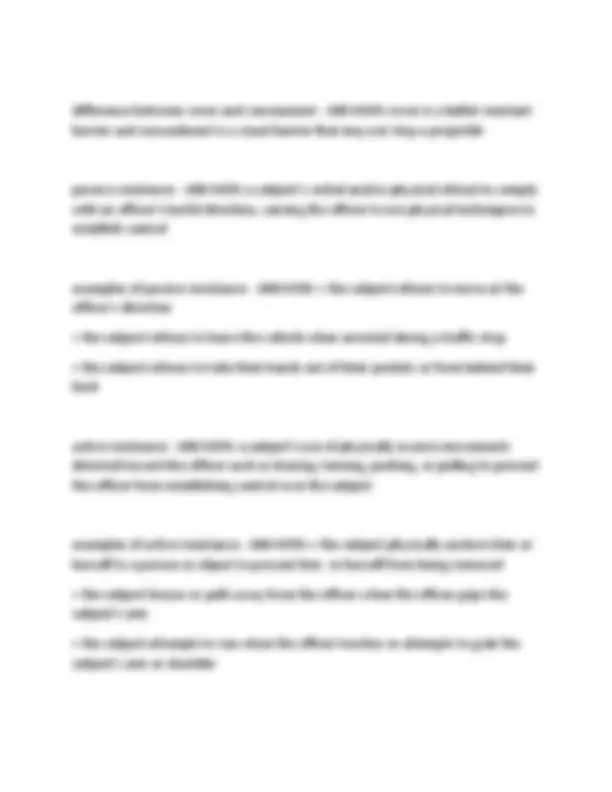
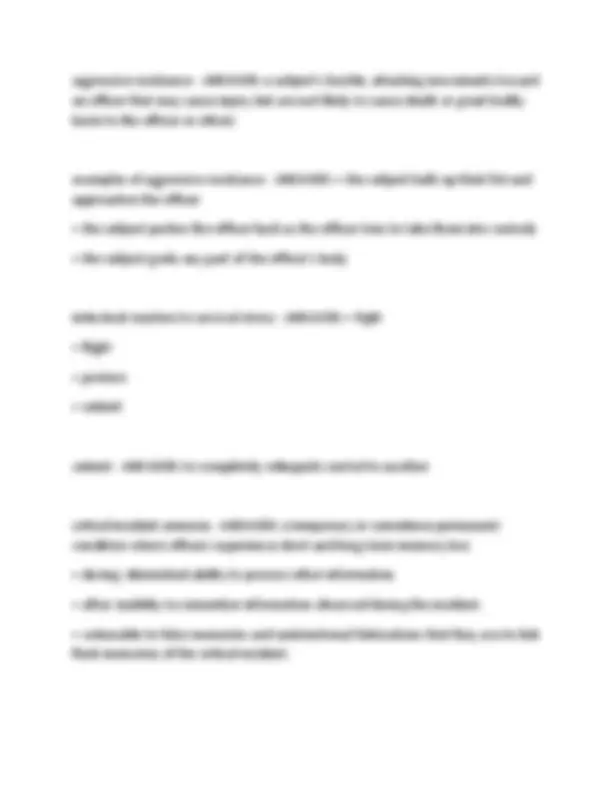
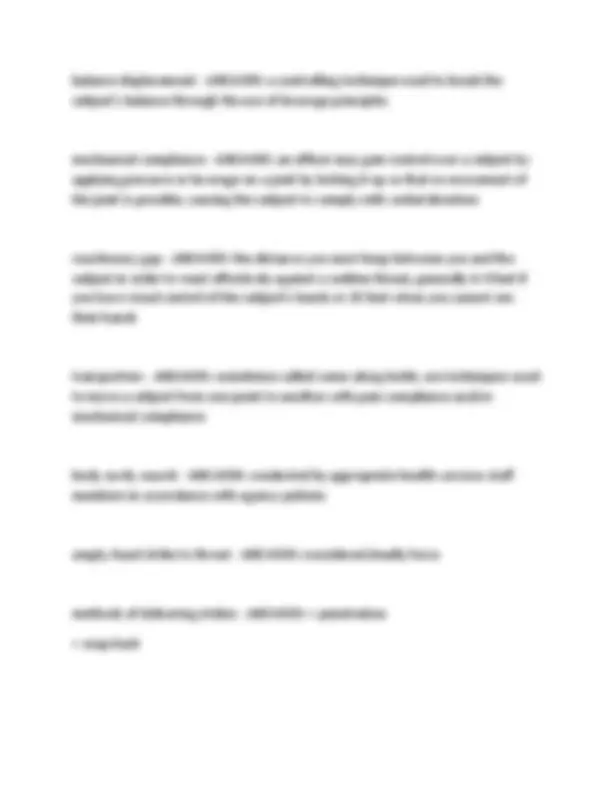
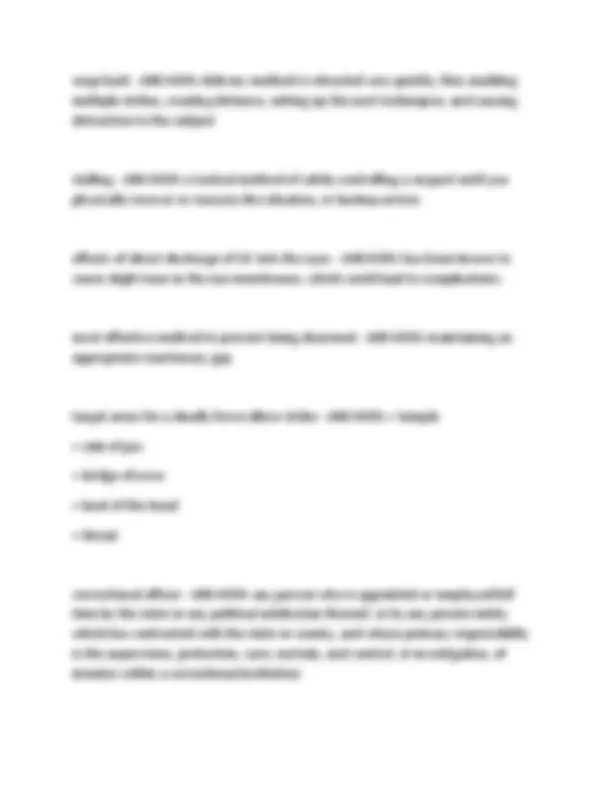
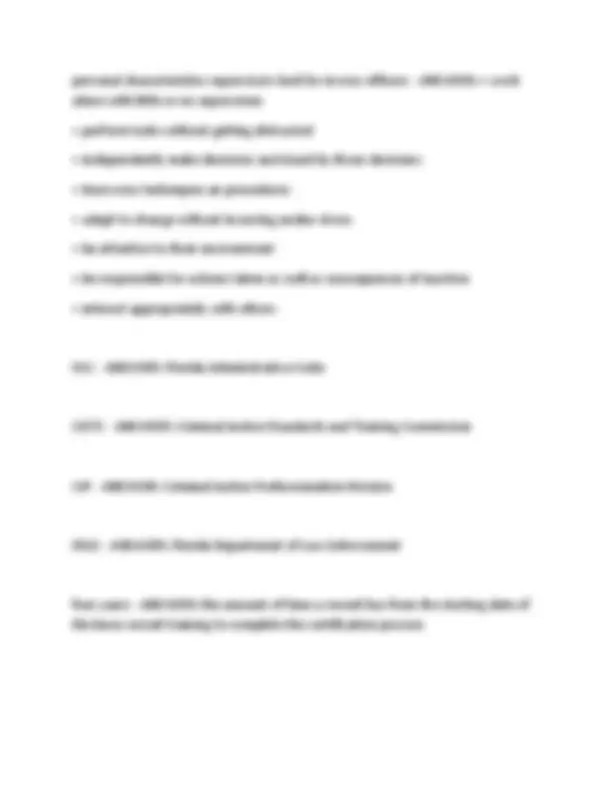
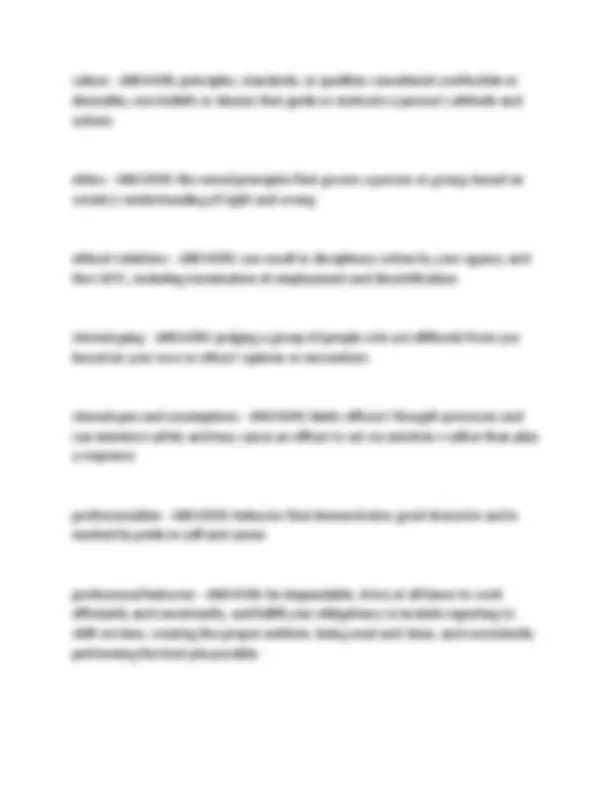
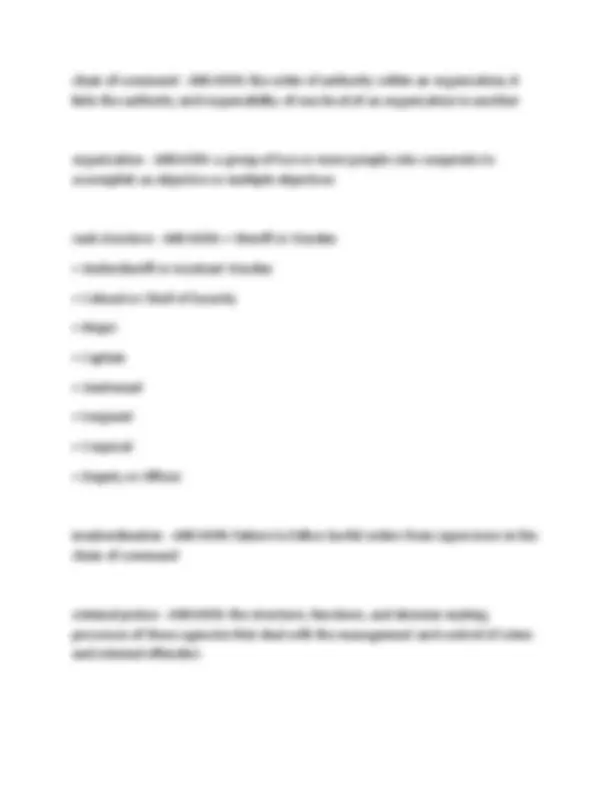
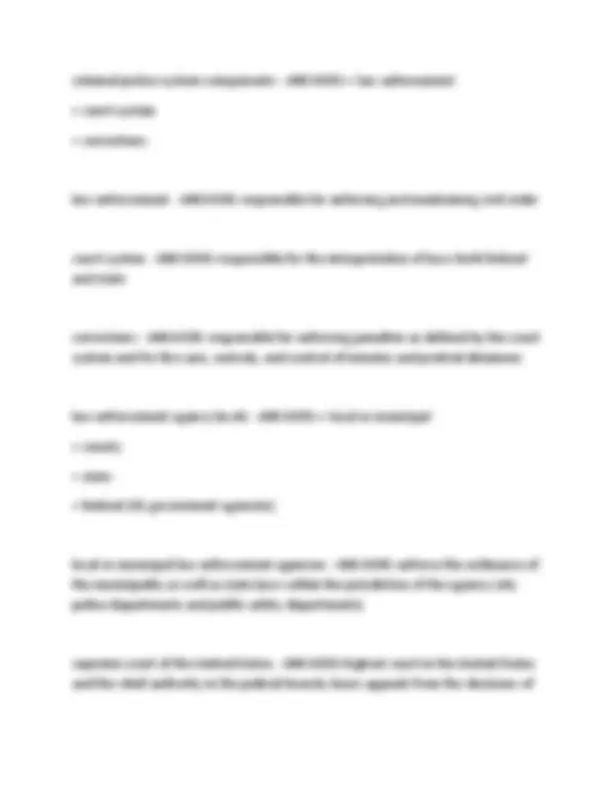
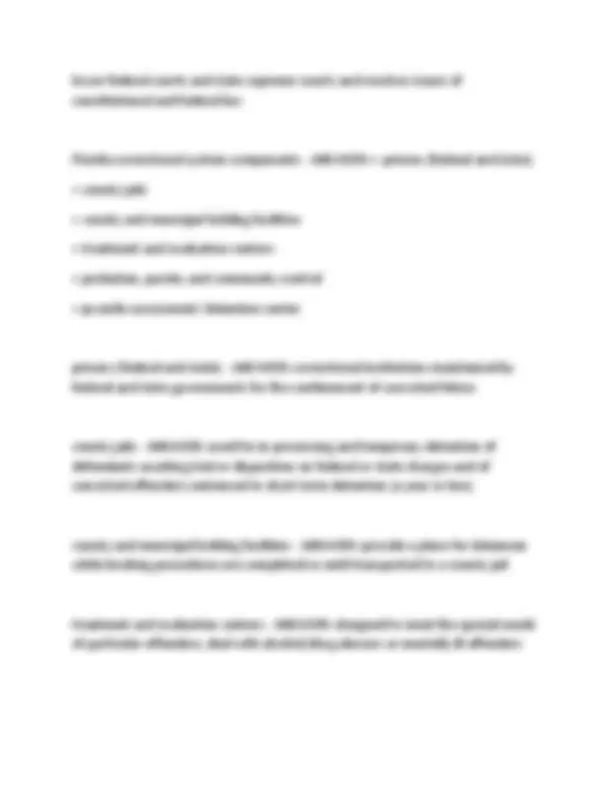
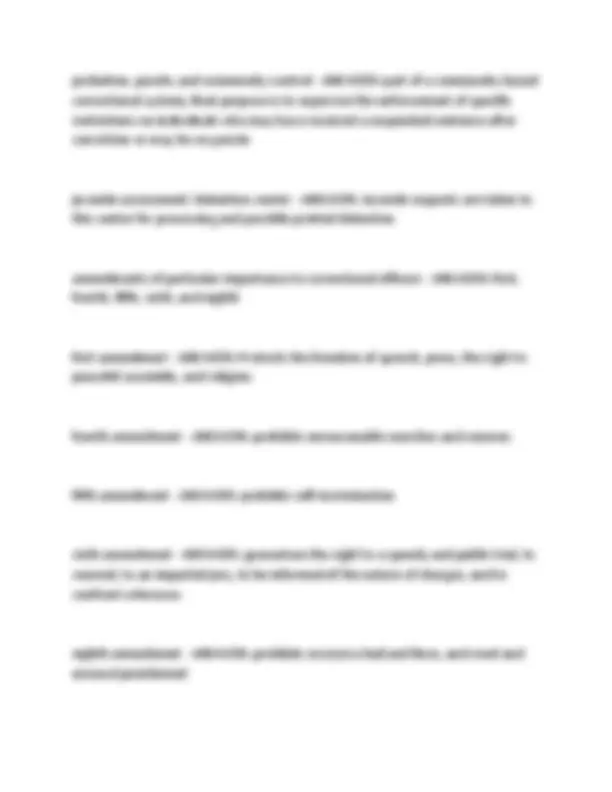
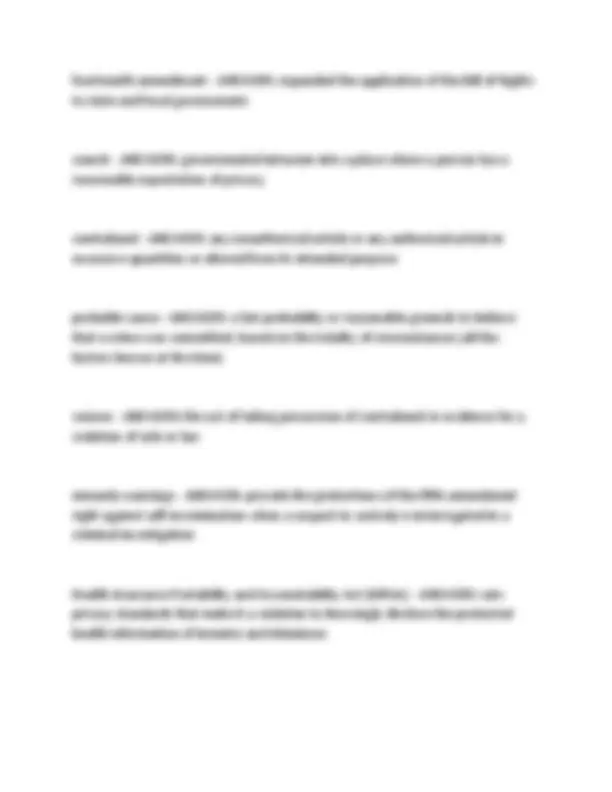
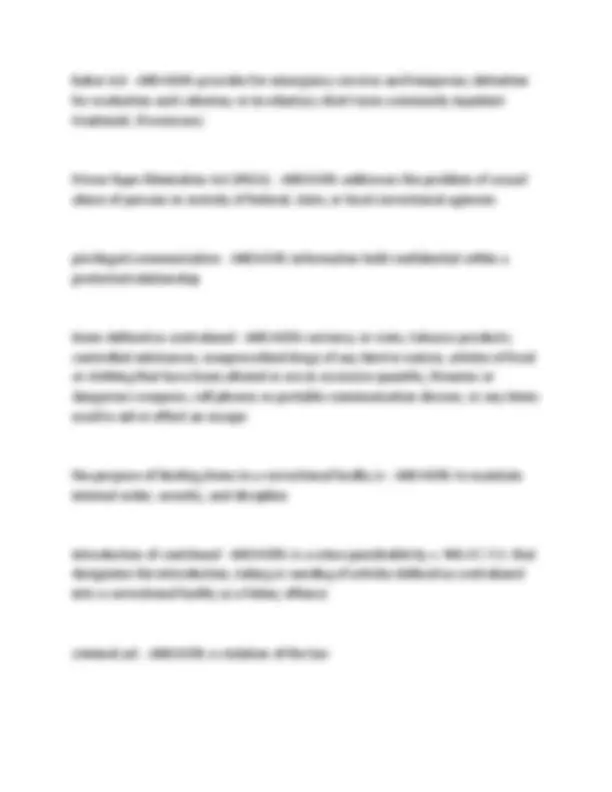
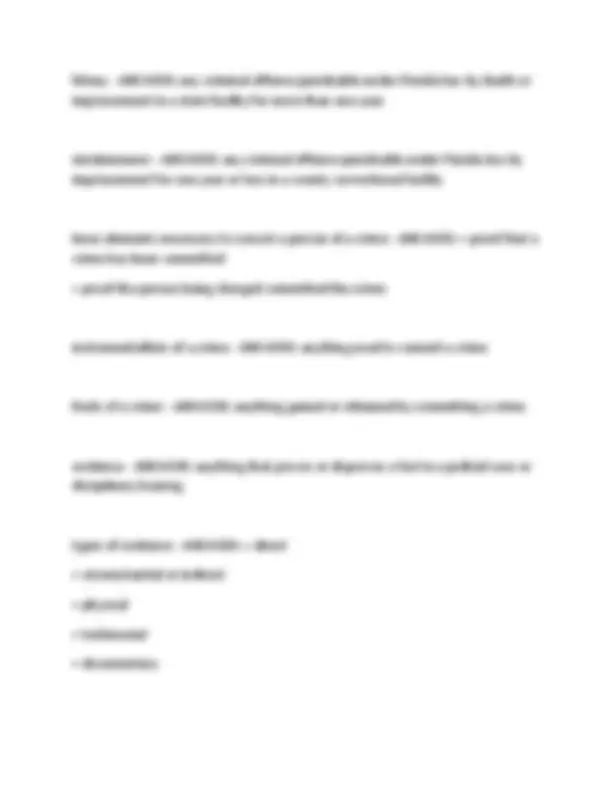
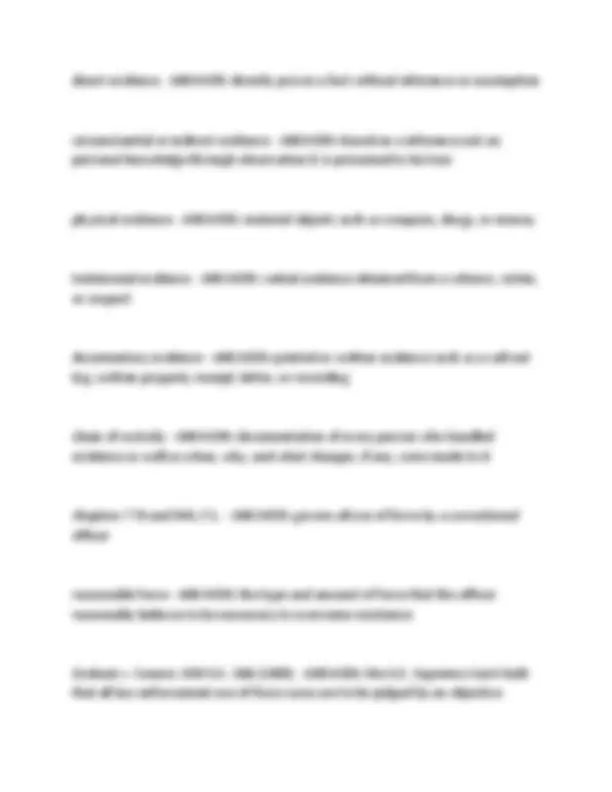
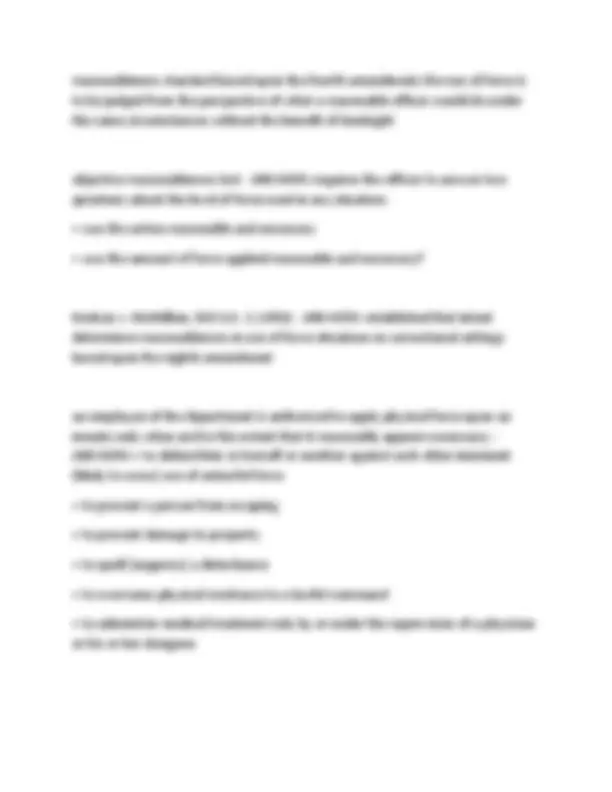
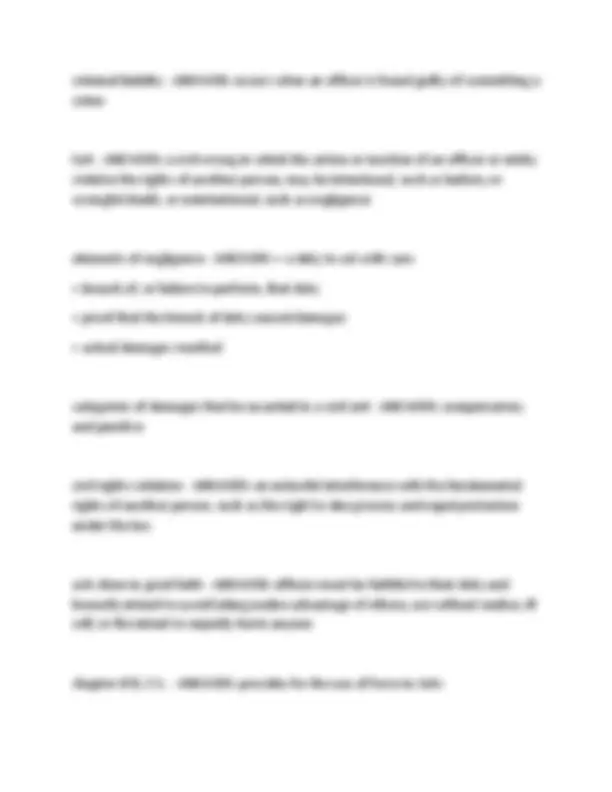
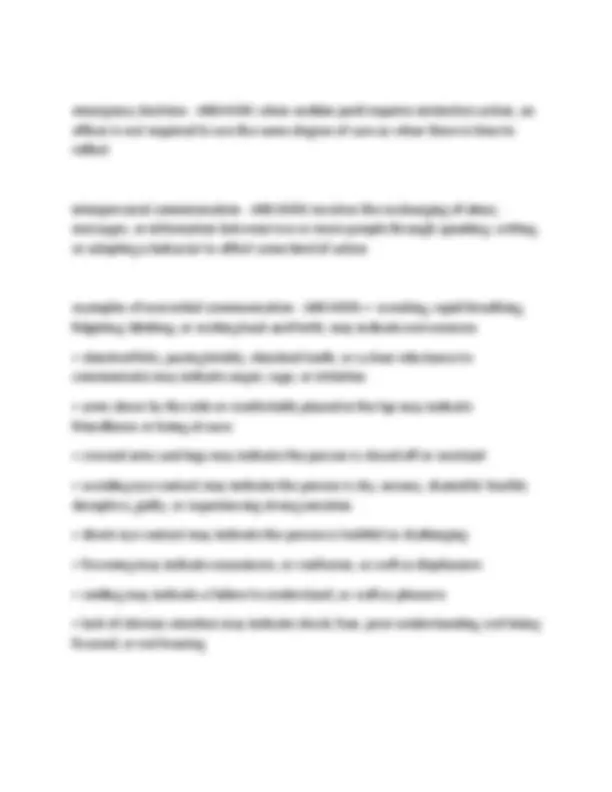
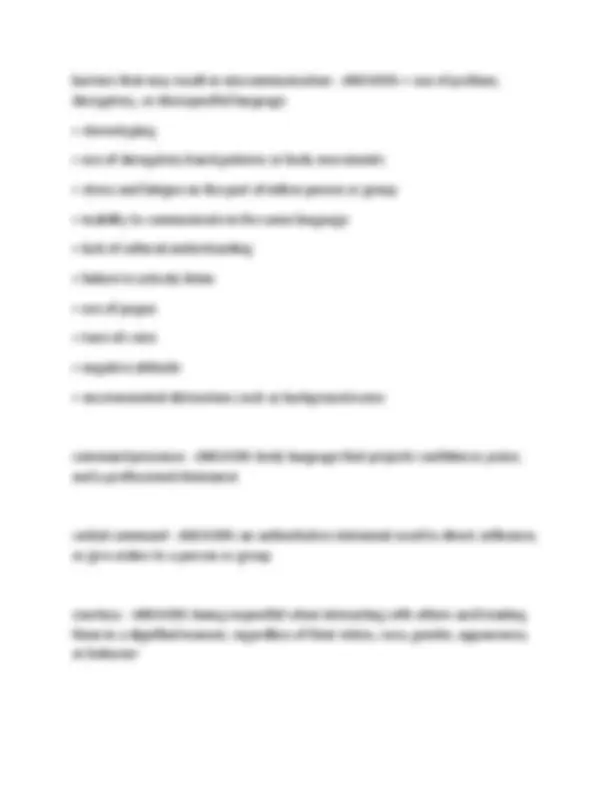
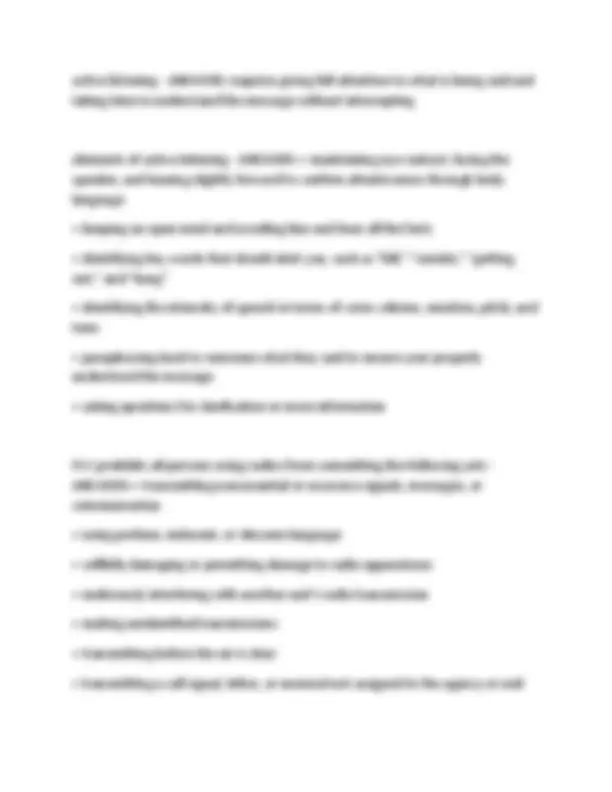
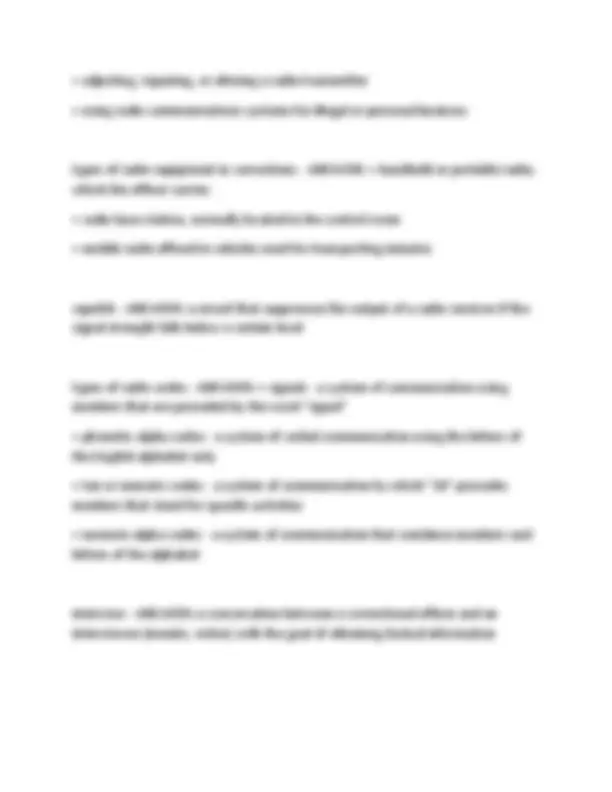
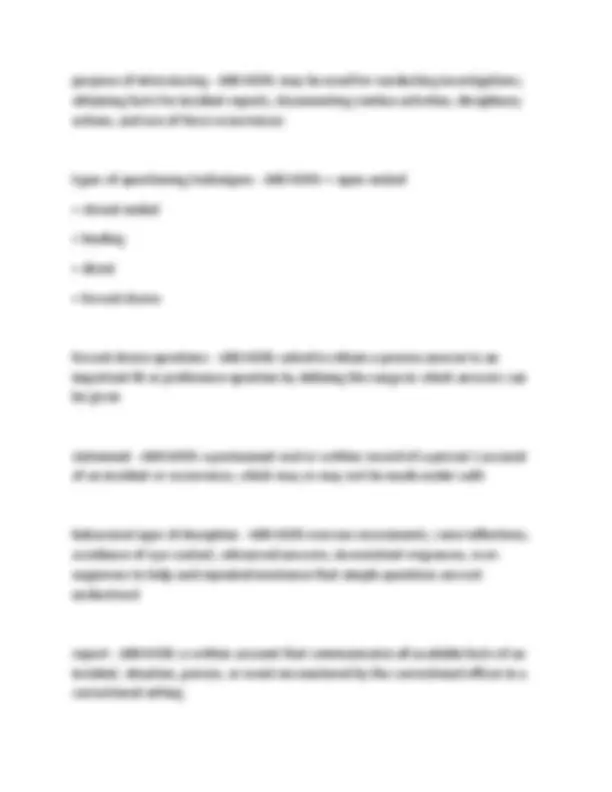
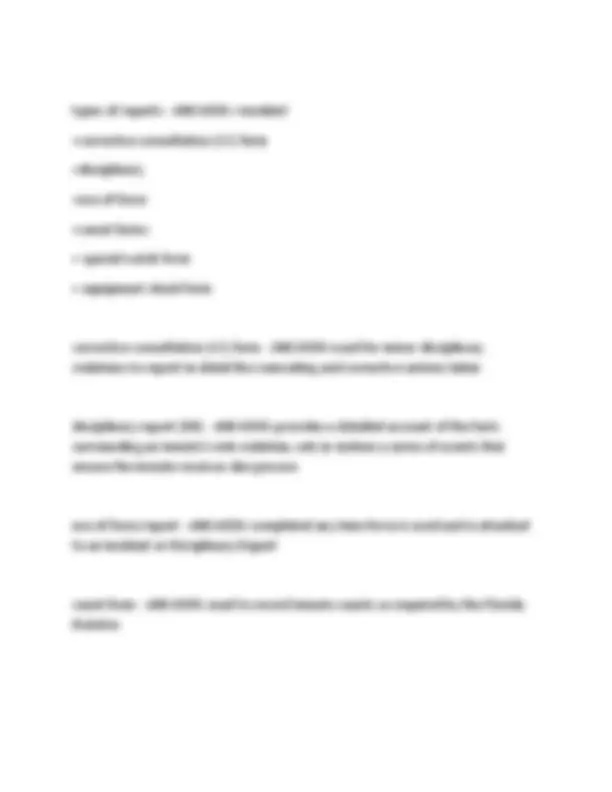
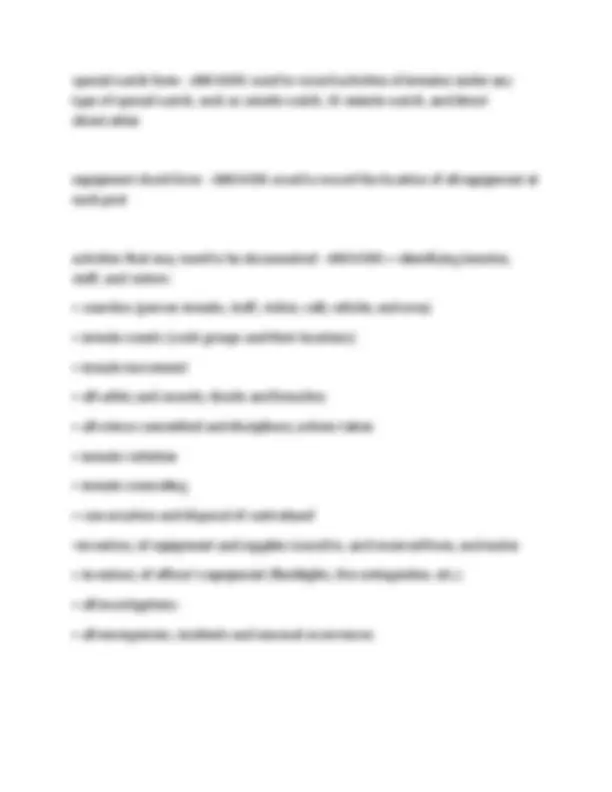
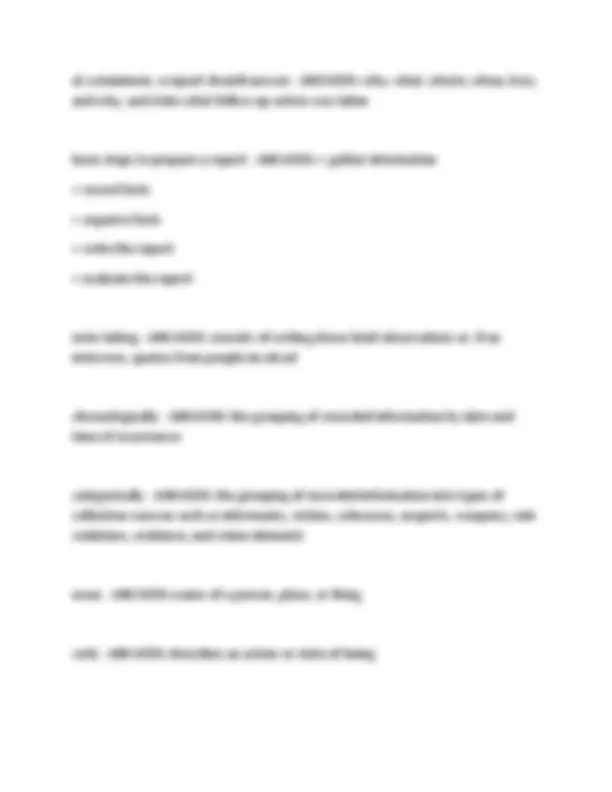
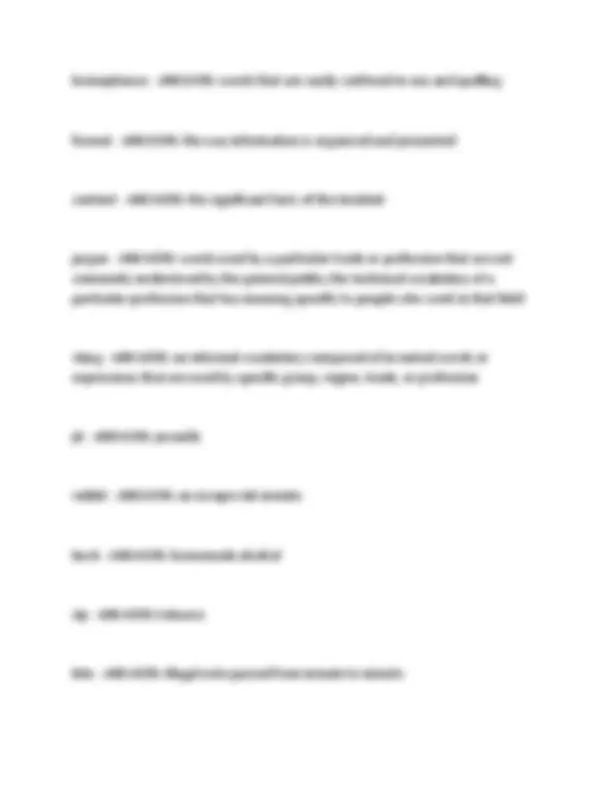
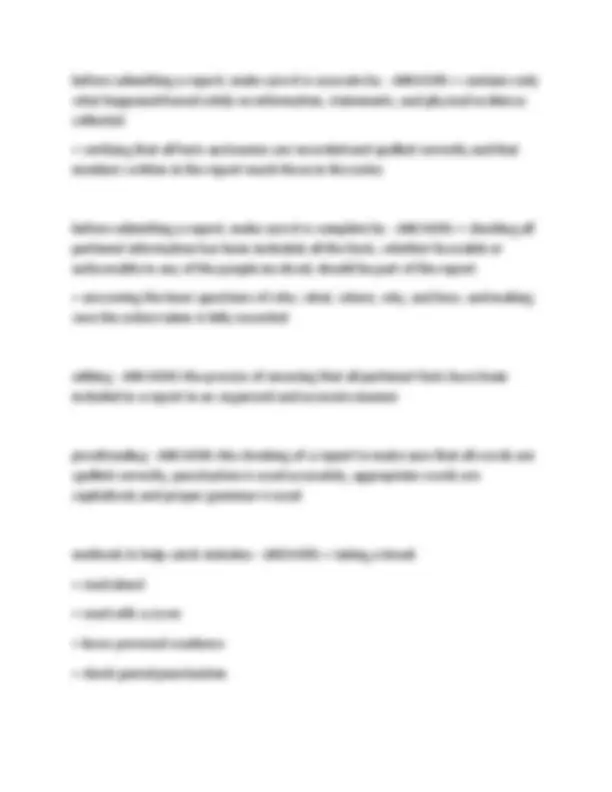
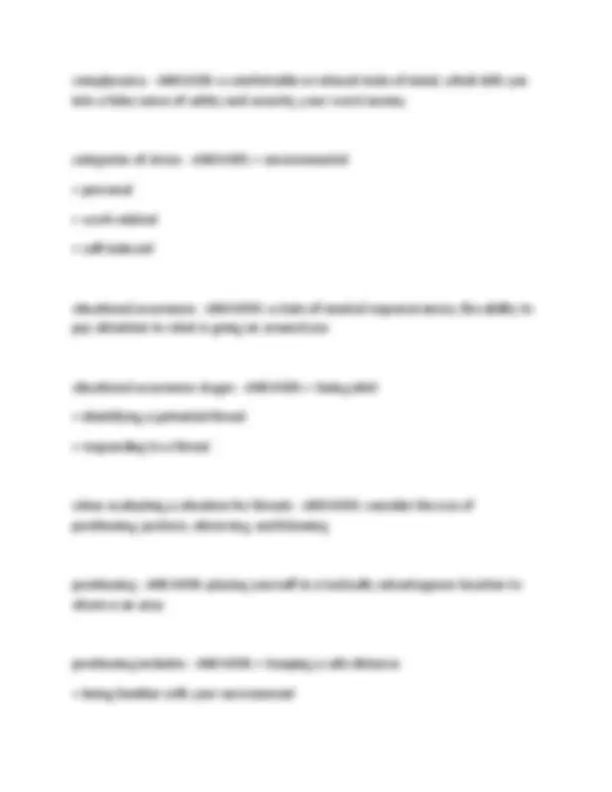
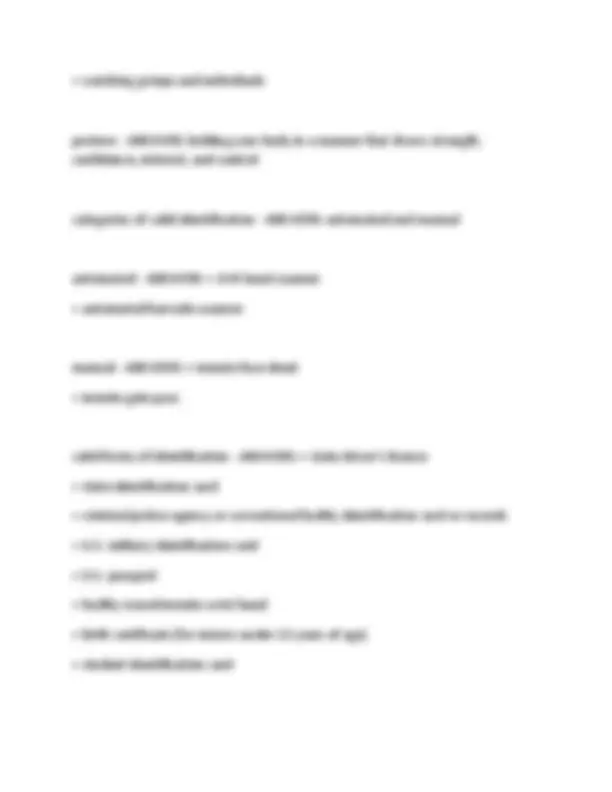
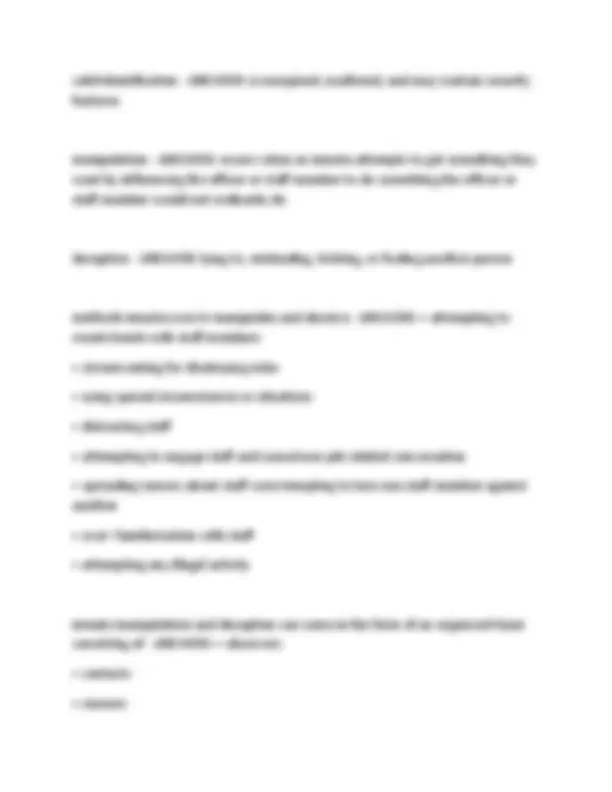
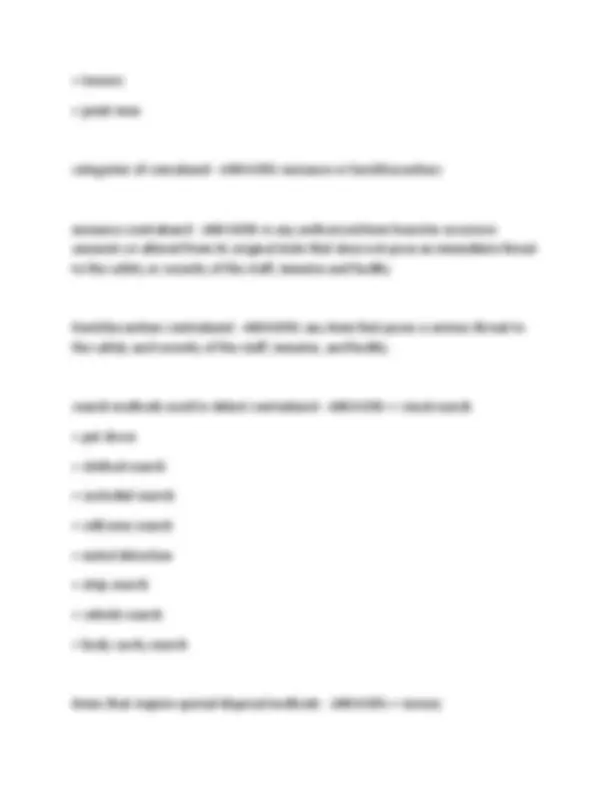
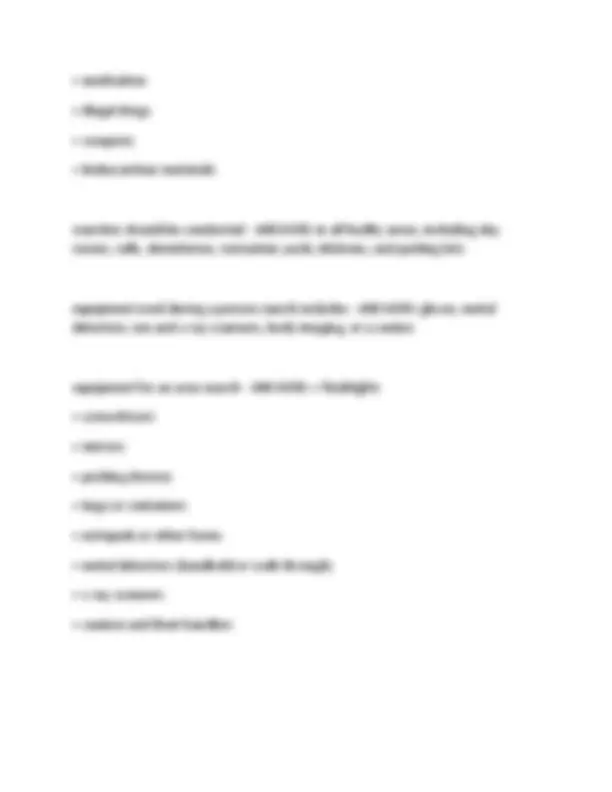
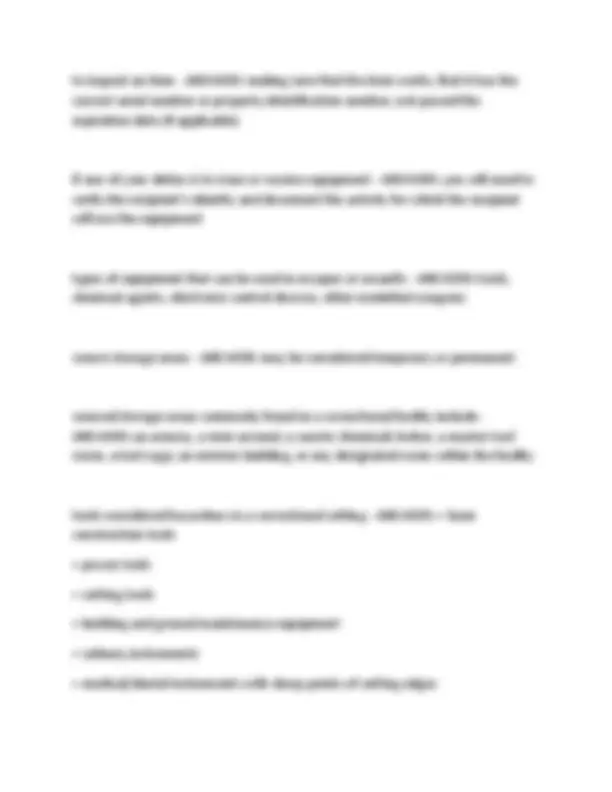
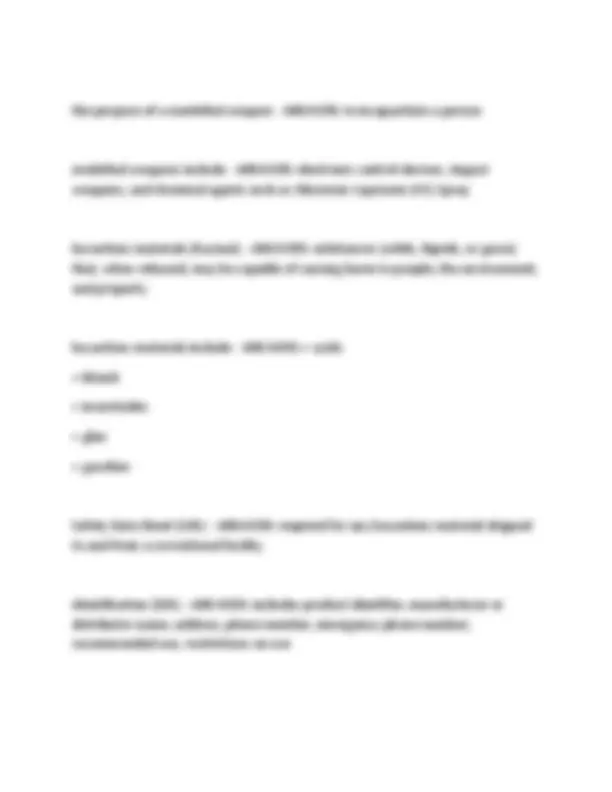
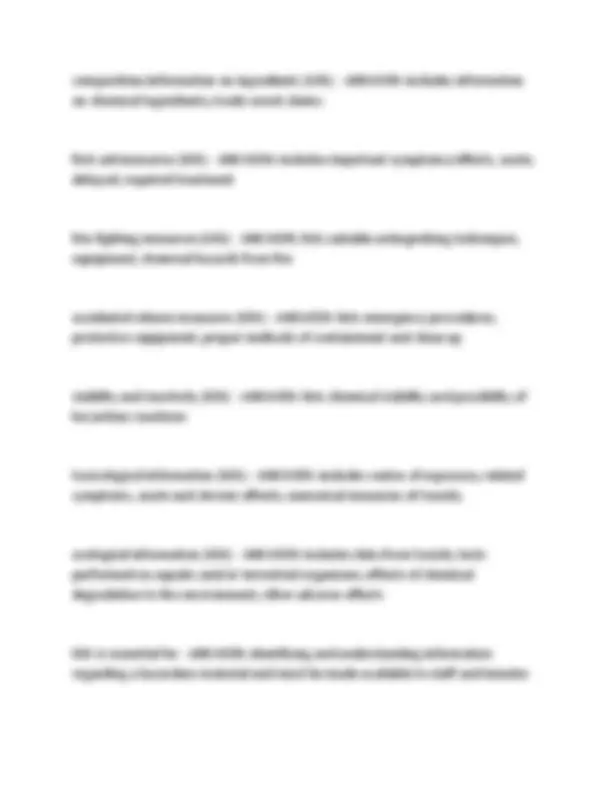
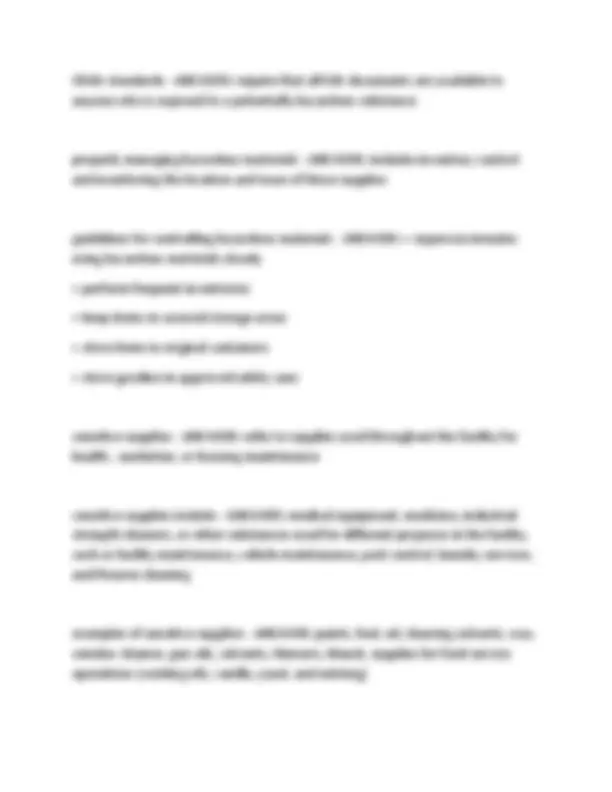
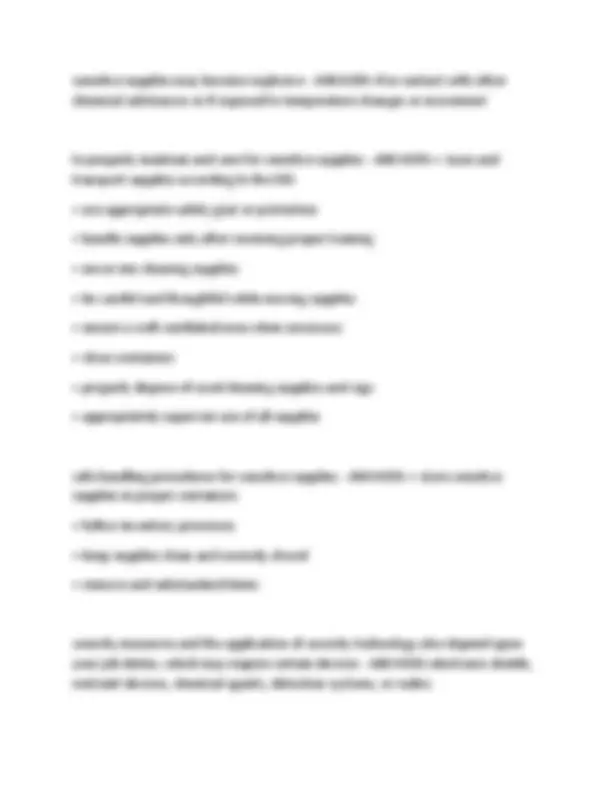
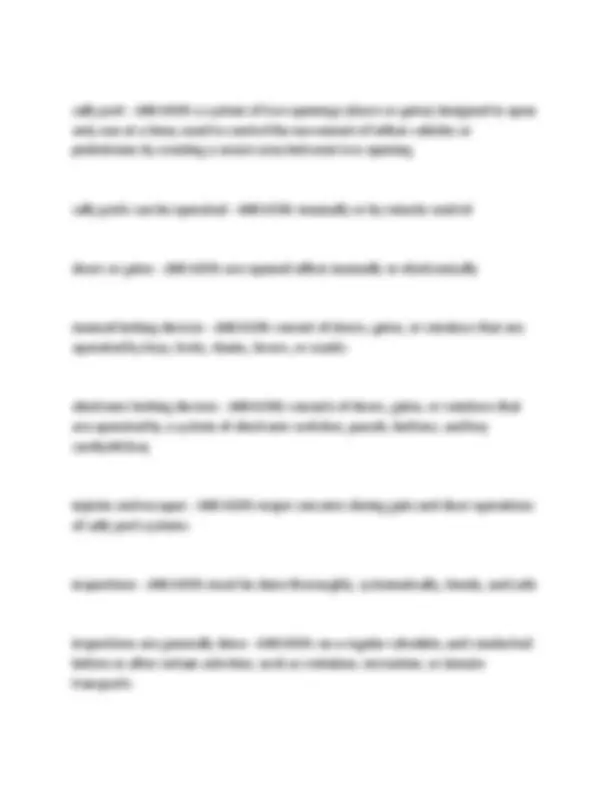
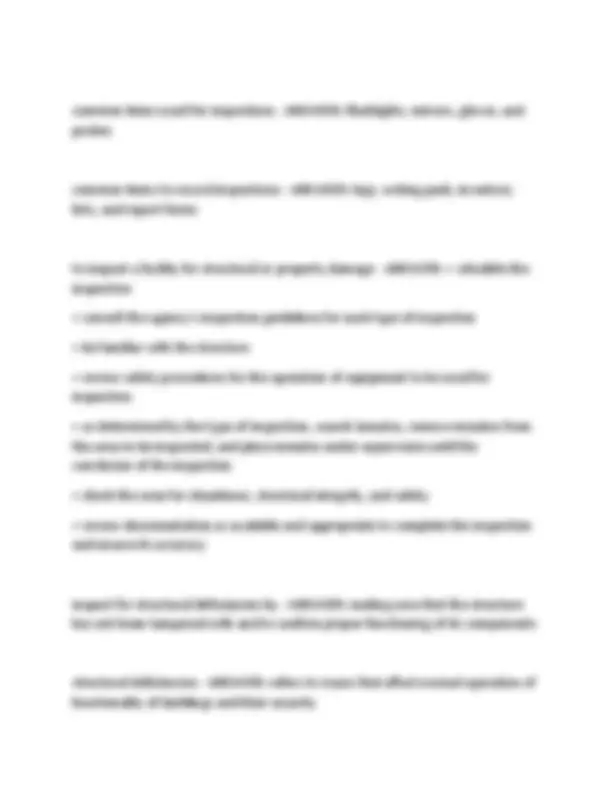
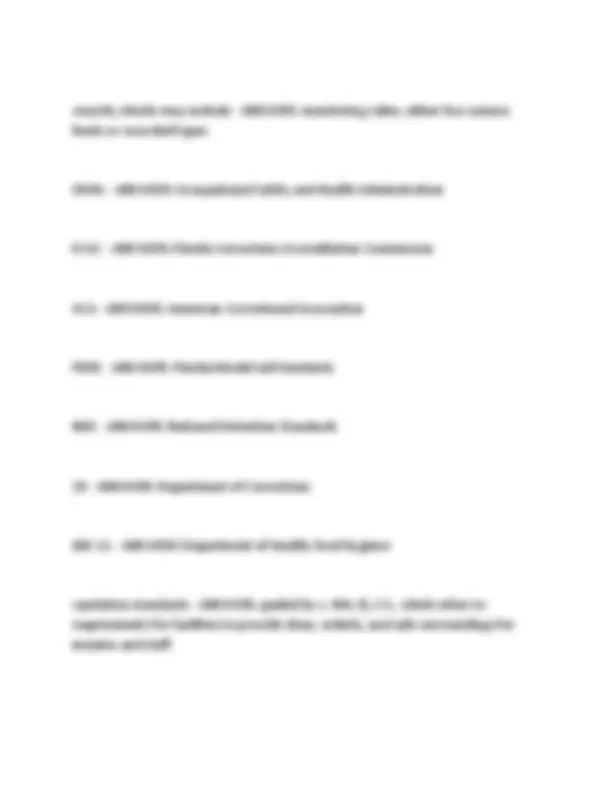
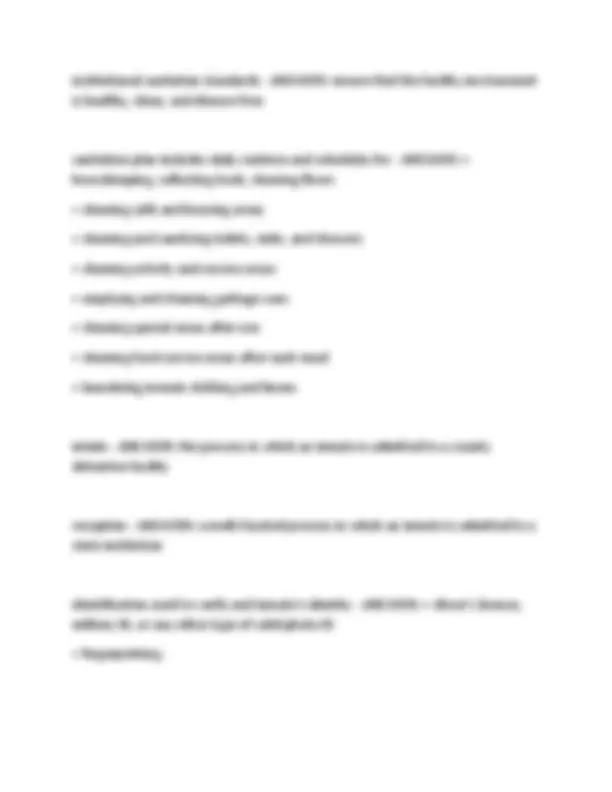
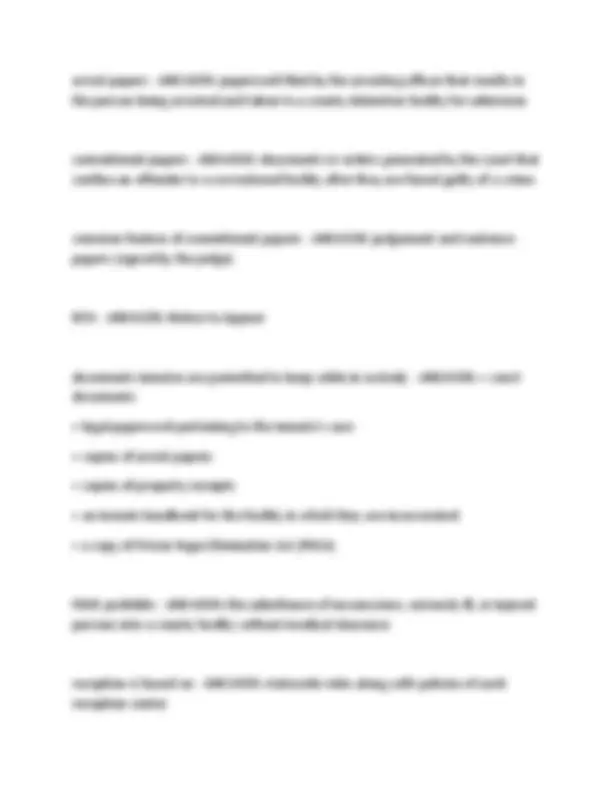
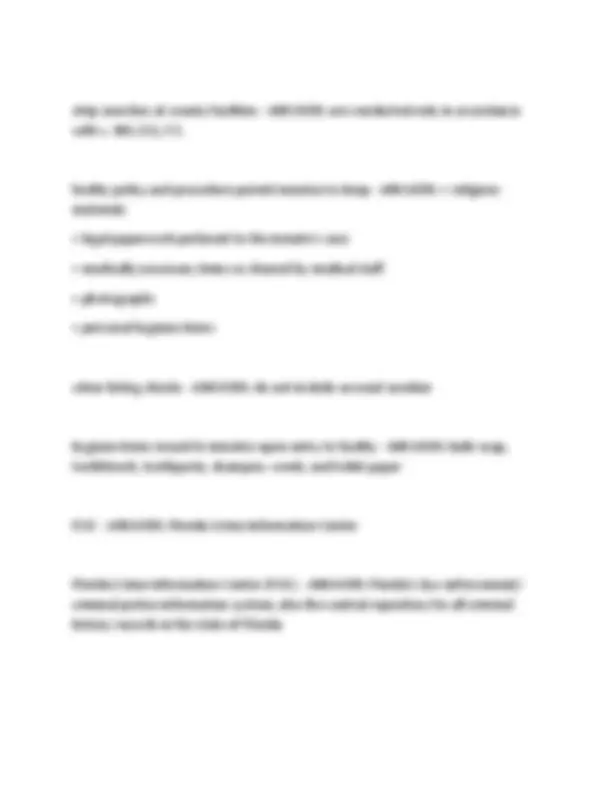
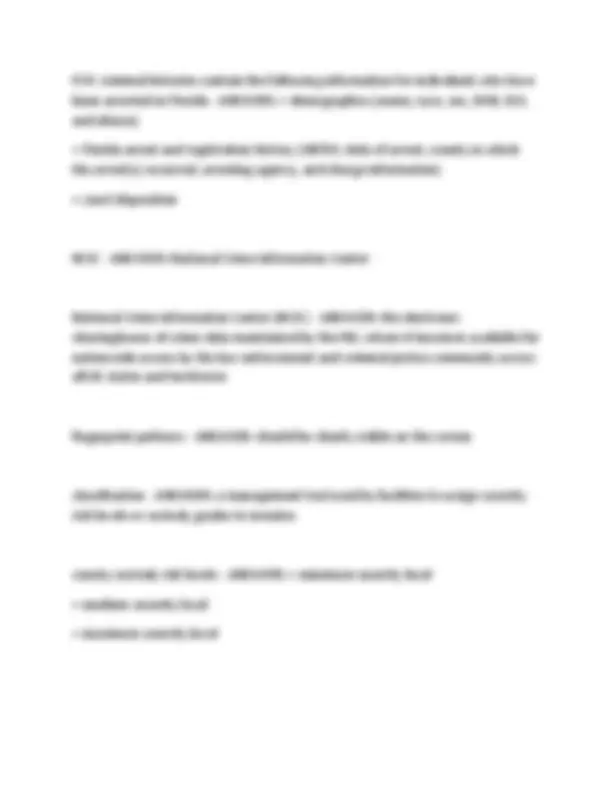
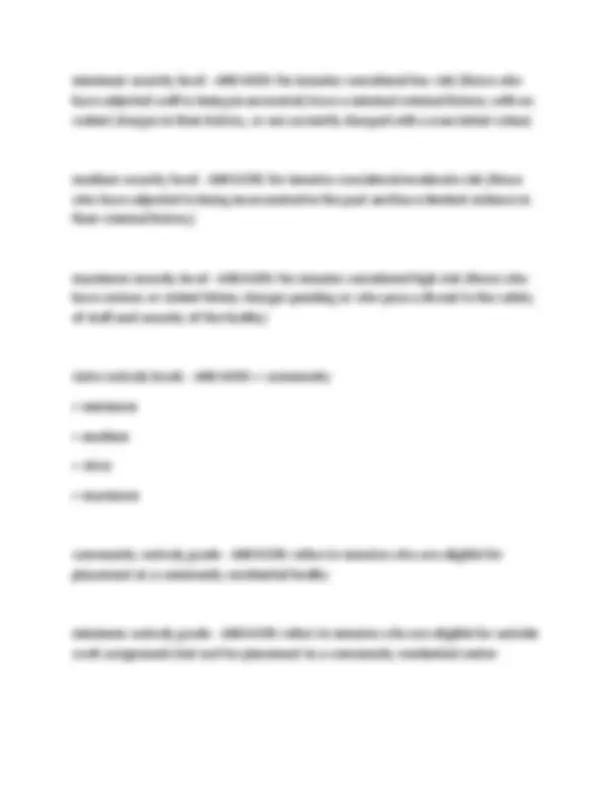
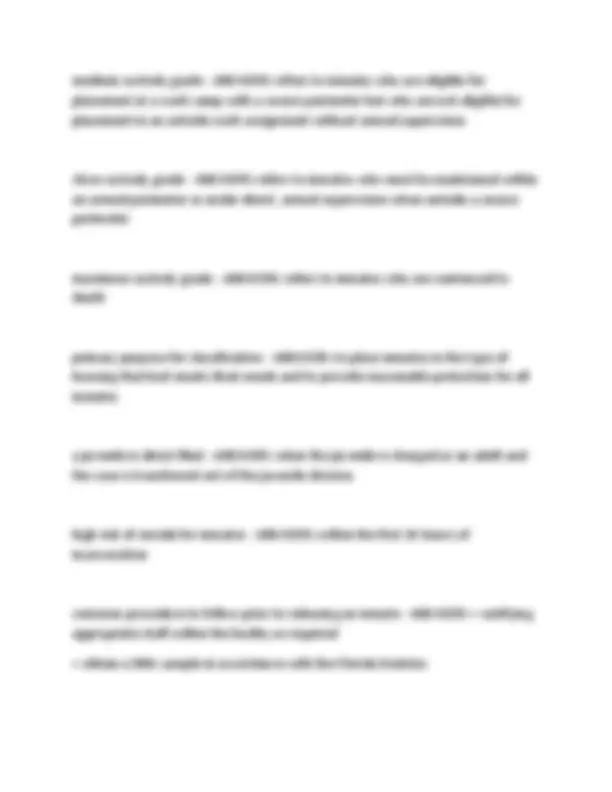
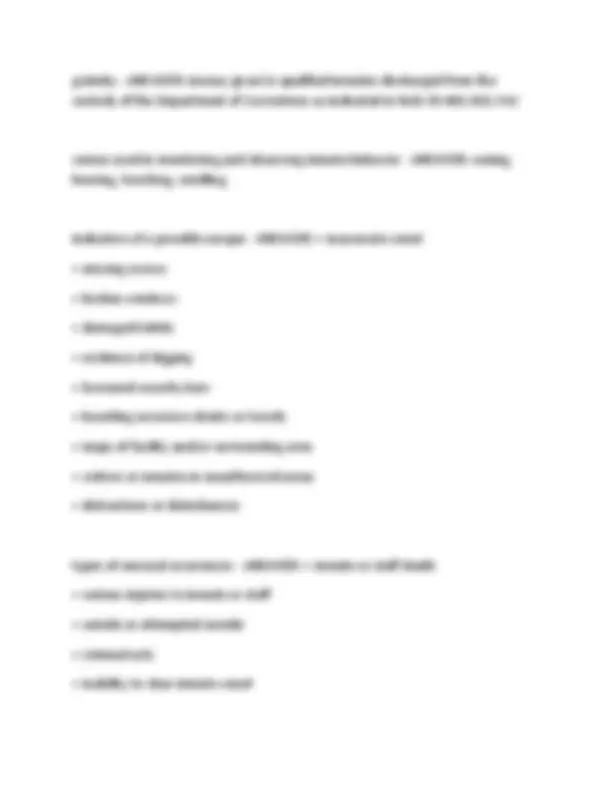
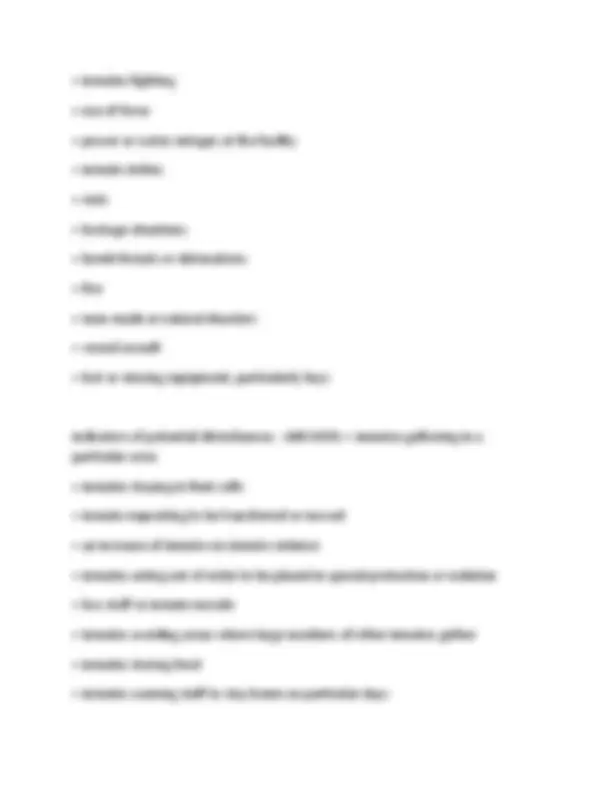
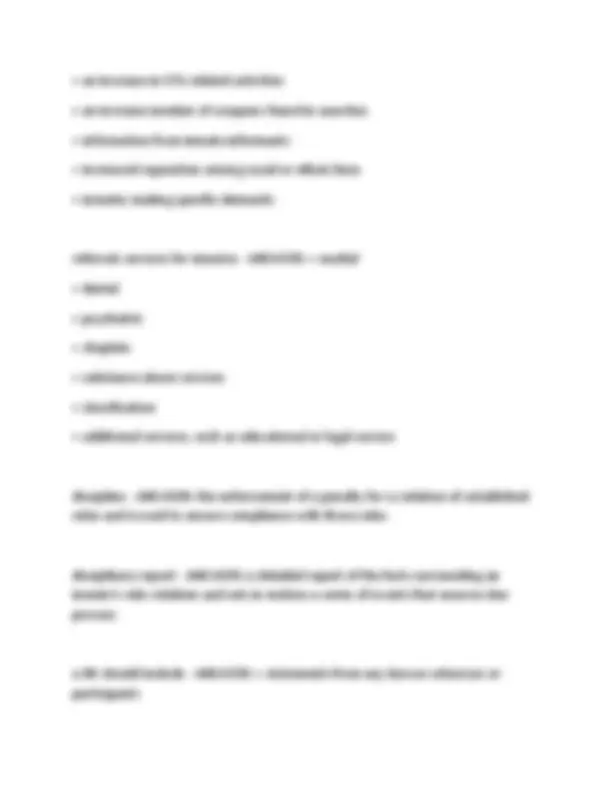
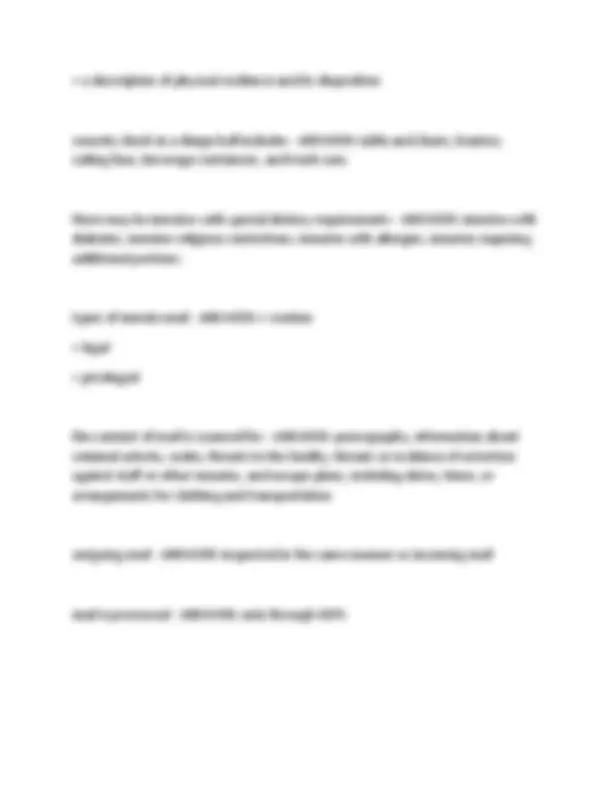
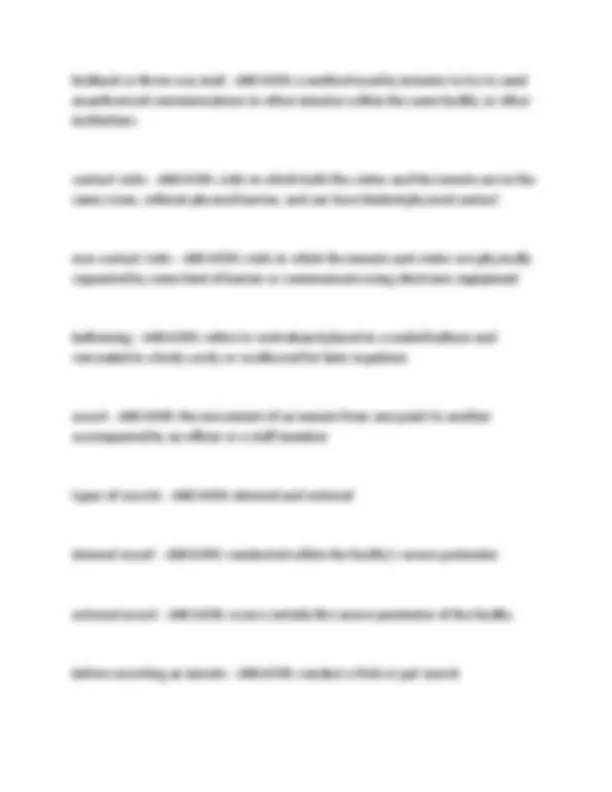

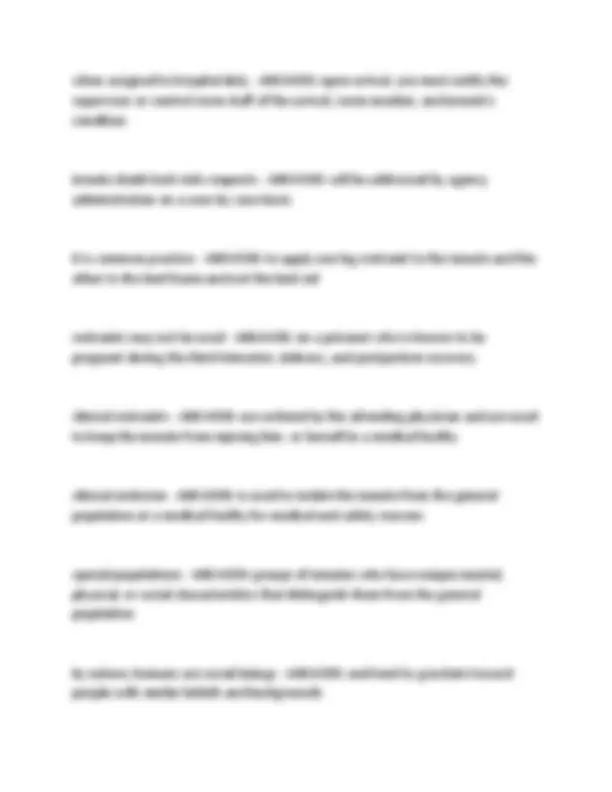
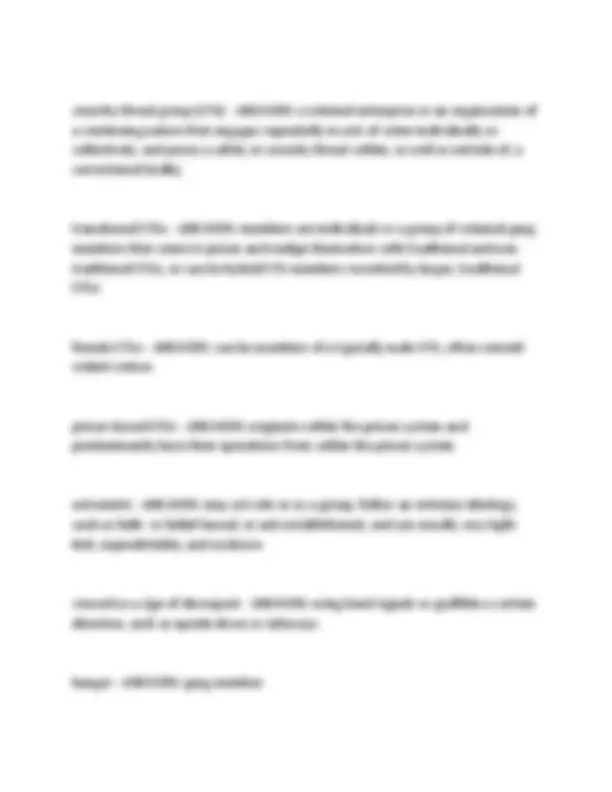
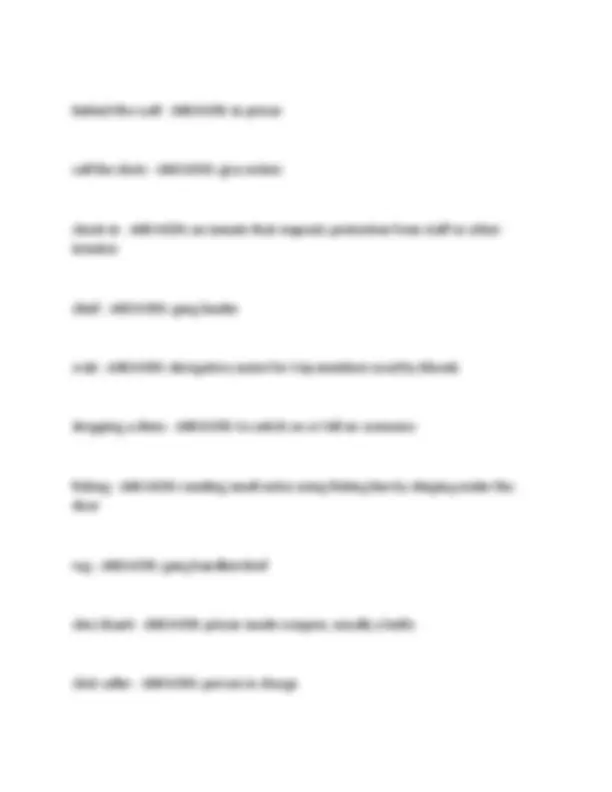
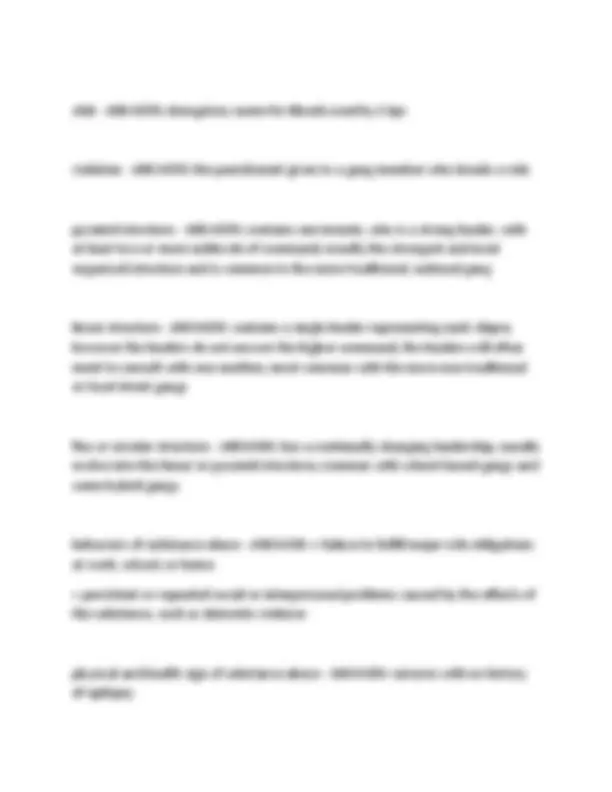
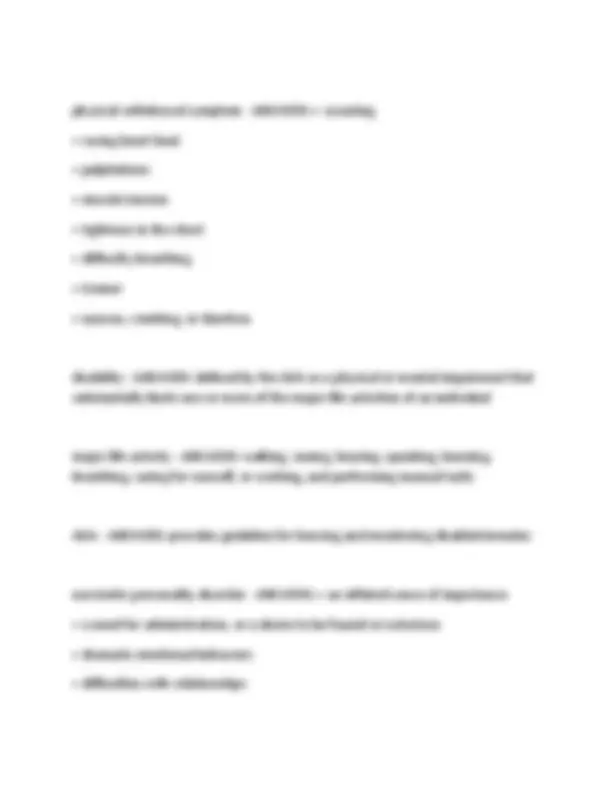
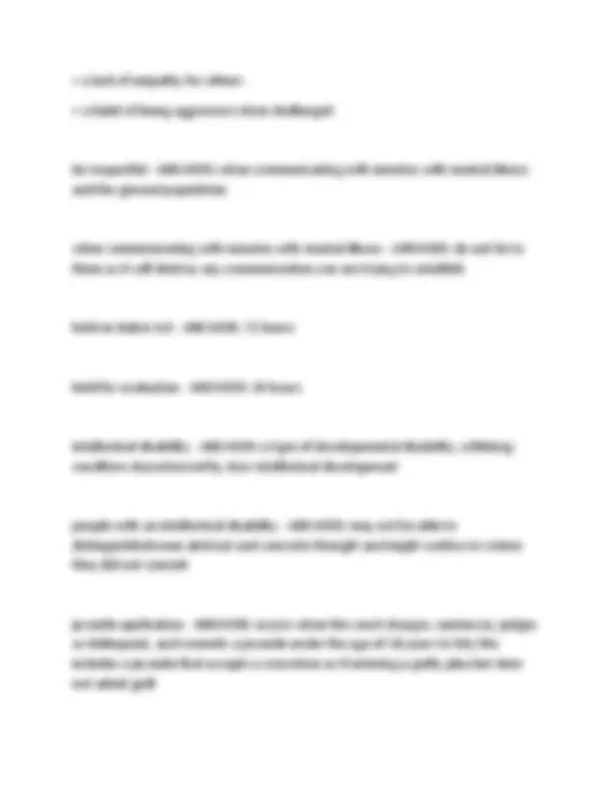
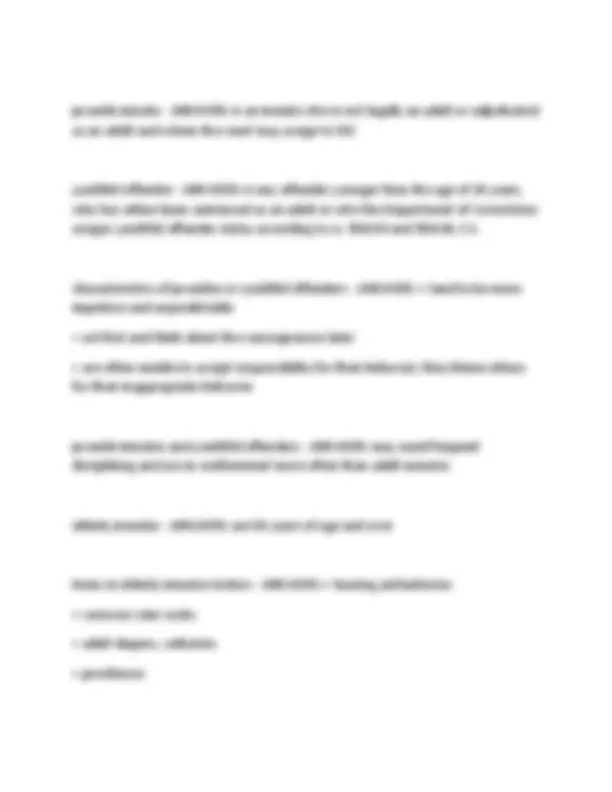
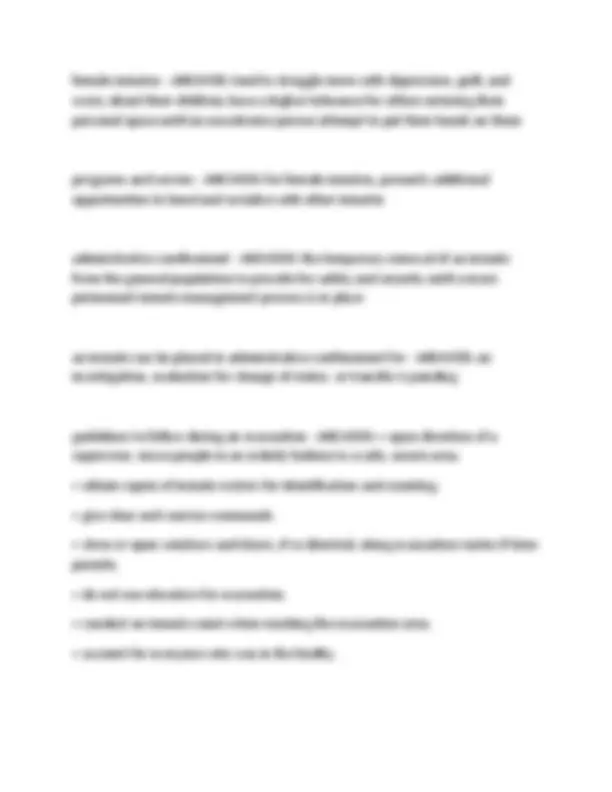
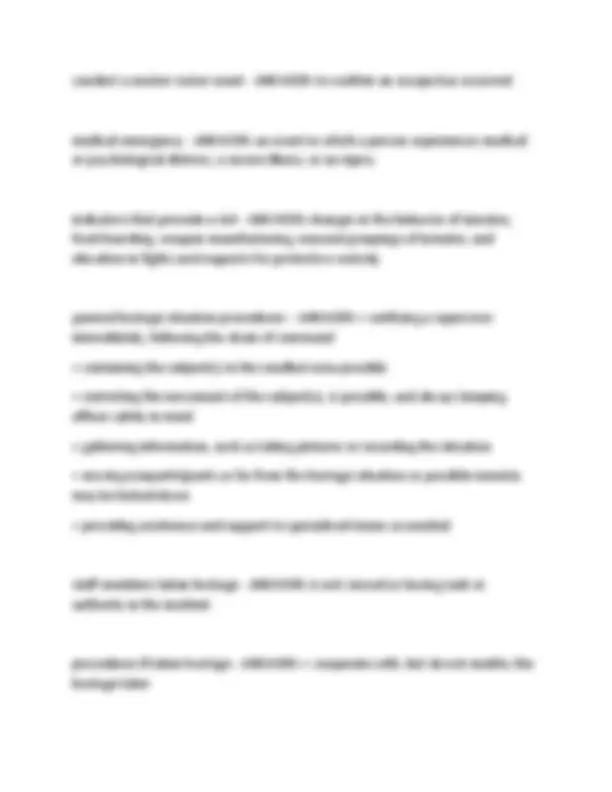
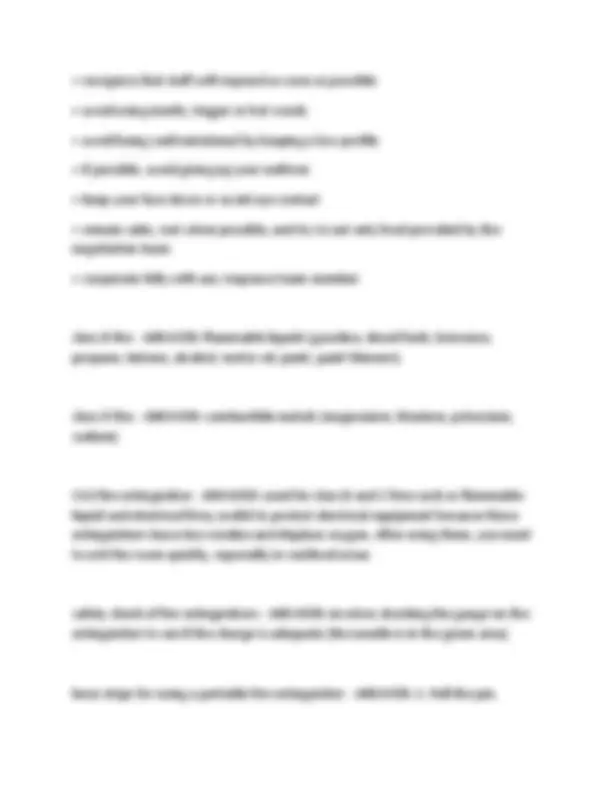
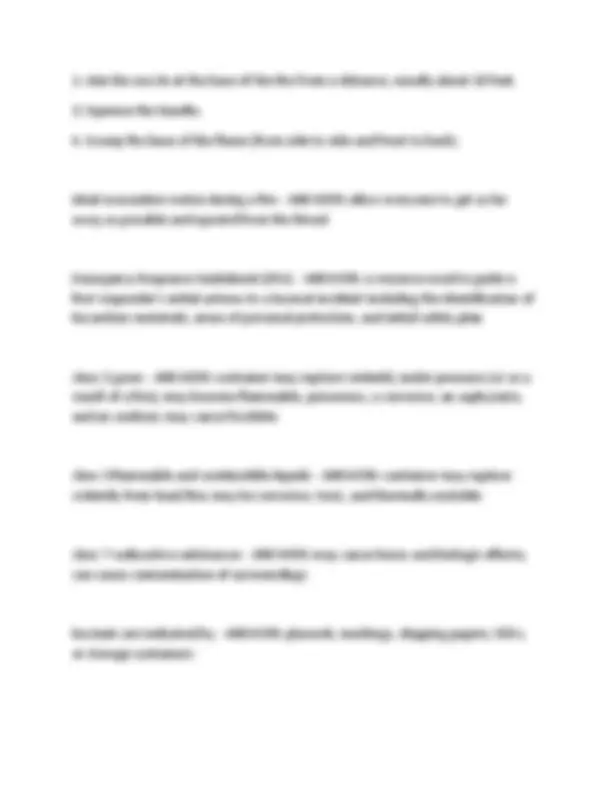
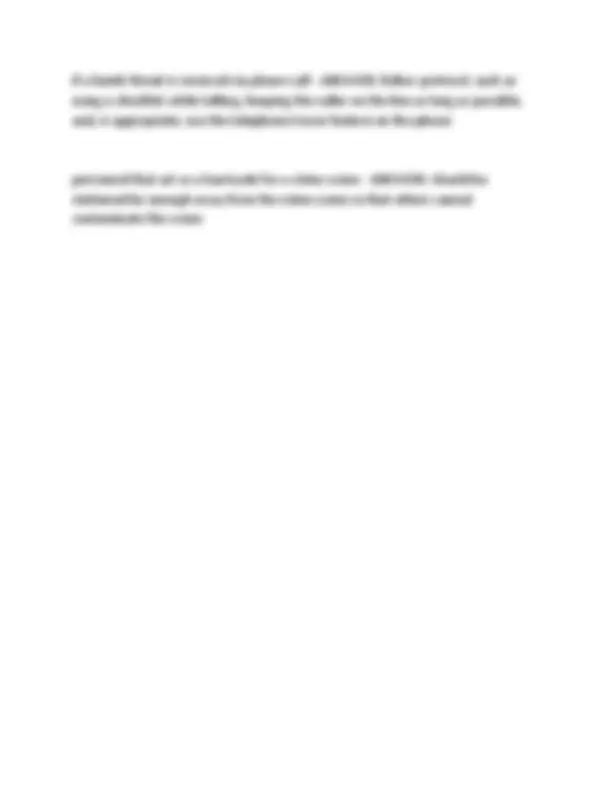


Study with the several resources on Docsity

Earn points by helping other students or get them with a premium plan


Prepare for your exams
Study with the several resources on Docsity

Earn points to download
Earn points by helping other students or get them with a premium plan
Community
Ask the community for help and clear up your study doubts
Discover the best universities in your country according to Docsity users
Free resources
Download our free guides on studying techniques, anxiety management strategies, and thesis advice from Docsity tutors
FLORIDA BRT CORRECTIONS – SOCE REVIEW EXAM WITH CORRECT ACTUAL QUESTIONS AND CORRECTLY WELL DEFINED ANSWERS LATEST 2025 ALREADY GRADED A+
Typology: Exams
1 / 82

This page cannot be seen from the preview
Don't miss anything!











































































concentrated form - ANSWERS-facilities often receive sensitive supplies in this form
security equipment - ANSWERS-refers to any item or technology used to enhance or maintain protection, and to ensure safety
the purpose of security equipment - ANSWERS-to alert staff of any unauthorized activity, and to discourage unauthorized movement
types of security equipment - ANSWERS-equipment for personal security, such as a body alarm system, or equipment used to preserve normal facility operations,
such as radios, perimeter alert systems, perimeter lights, cameras, or microwave systems (movement detection)
perimeter - ANSWERS-a secure area that surrounds a facility and is critical element of security
types of institutional security equipment - ANSWERS-• gates - entrances that open in sequence, one after the other to confine a person in the space in between
stages of grief - ANSWERS-• denial
gloves - ANSWERS-minimizes skin contact with blood or other body fluids. always use if you expect to have physical contact with a patient or a prisoner; if you have skin contact with people who are bleeding or have open sores, rashes, blisters, burns, or other broken skin conditions; and if you have open cuts, sores, burns, rashes, or other broken skin conditions on your hands. universal precautions apply in any situation where you can clean and decontaminate spilled blood or other body fluids, handle body fluids or blood-contaminated equipment, or handle containers labeled biohazardous or biomedical waste.
hand washing - ANSWERS-if visibly dirty or soiled with blood or other body fluids, wash with plain or antimicrobial soap and water. if not visibly soiled, use an alcohol-based hand rub to decontaminate. if no contact with blood or other body fluids, consider using sanitizing wipes or towelettes as alternative to washing with plain soap and water.
methicilin-resistant staphylococcus aureus (MRSA) - ANSWERS-a type of bacteria that is highly contagious and resistant to certain antibiotics; causes a skin infection that is red, swollen, or painful, or an area that is warm to the touch or is draining pus; may look like a spider bite, pimple, or boil, and the person may have a fever
precautions to avoid contracting MRSA - ANSWERS-• shower with soap and water as soon as possible after direct contact with an open sore and use a clean, dry towel
stages of HIV - ANSWERS-• asymptomatic
airborne infection - ANSWERS-any infection spread from person to person through the air
respiratory system - ANSWERS-delivers oxygen to and removes carbon dioxide from the blood; the nose, mouth, throat, voice box, and windpipe makes up the airway that brings oxygen to the lungs
circulatory system - ANSWERS-pumps blood throughout the body; functions to deliver oxygen and nutrients to and remove waster from the body's tissues; basic parts are the heart, veins, capillaries, arteries, and blood
the heart - ANSWERS-consists of two sides, each having an upper and lower chamber; right side pumps blood to the lungs, picks up oxygen, returns oxygenated blood to the left side and the left side delivers oxygenated blood throughout the body and returns blood to the right side
blood vessels - ANSWERS-a system of tubes through which blood flows
emergency move - ANSWERS-performed when a patient is in immediate danger or the patient's location prevents providing care to that patient or another patient
recovery position - ANSWERS-helps maintain an open airway if the patient becomes nauseated or vomits and may prevent positional asphyxia
positional asphyxia - ANSWERS-used to describe the placement of a body in a position that interferes with the ability to breathe
walking assist - ANSWERS-Most Common non-emergency move for a responsive, ambulatory patient; patients with leg injuries or visual impairments benefit from a walking assist
SEAL Team three carry - ANSWERS-used to move a standing, conscious patient who is non-ambulatory
classify patients according to the START protocols - ANSWERS-• RED - immediate
shock - ANSWERS-a failure of the heart and blood vessels (circulatory system) to maintain enough oxygen-rich blood flowing to the vital organs of the body
contusion - ANSWERS-a closed injury that is discolored and painful at the injury site
bruising - ANSWERS-the obvious discoloration (black and blue) of the soft tissue at the injury site
hematoma - ANSWERS-a closed injury that appears as a discolored lump
swelling - ANSWERS-the soft tissue raised when blood or other body fluids pool beneath the skin at the injury site
tourniquet - ANSWERS-a device that restricts blood flow to an extremity such as an arm or leg; used when the amount of blood lost endangers the victim's life and other methods of controlling the bleeding have failed
impaled object - ANSWERS-an object that punctures the soft tissue and stays in place
partial thickness burn (second-degree) - ANSWERS-damages the first two skin layers, which blister and feel very painful
anaphylactic shock - ANSWERS-also known as anaphylaxis, results from insect bites or stings, medications, pollen, foods, chemicals, or any substance that triggers an allergic reaction
signs and symptoms of anaphylactic shock - ANSWERS-• warm, tingling feeling in the mouth, face, chest, feet, and hands
excited delirium - ANSWERS-A state of extreme mental and physiological excitement characterized by exceptional agitation and hyperactivity, overheating, excessive tearing of the eyes, hostility, superhuman strength, aggression, acute paranoia, and endurance without apparent fatigue
signs and symptoms of excited delirium - ANSWERS-• unbelievable strength
bullet design - ANSWERS-• round nose - the nose of the bullet is round
hollow-point - ANSWERS-lead or copper-jacketed lead with a hollow cavity in the bullet's nose; as the bullet expands upon impact, it extends its kinetic energy. since a hollow-point bullet expands quickly, it does not penetrate as deeply as a round-nose bullet. this design reduces ricochet. usually of high velocity, it delivers maximum shock upon striking a surface of soft tissue
jacketed soft point - ANSWERS-one-half to three-quarters of this lead bullet is jacketed with copper; the exposed lead on the flat nose allows for expansion upon impact. usually of high velocity, this bullet is designed for antipersonnel. the round easily penetrates interior walls and solid doors.
environmental conditions - ANSWERS-affects the ammunition's shelf and duty life expectancy and may cause malfunctions when you use the cartridges
accessory rail (semiautomatic pistol) - ANSWERS-provides space for lighting and sighting devices
magazine catch (semiautomatic pistol) - ANSWERS-releases the magazine from the frame (magazine well)
magazine floor plate (semiautomatic pistol) - ANSWERS-base of the magazine
slide stop lever (semiautomatic pistol) - ANSWERS-device that locks the slide in the open position
thumb rest (semiautomatic pistol) - ANSWERS-place for the thumb to rest while gripping the pistol
main parts of the magazine - ANSWERS-• follower
single action - ANSWERS-mechanism performs the single action of releasing the hammer or striker
double action only - ANSWERS-every round fires double action with the hammer at rest against the rear of the slide
shoot the semiautomatic pistol with one-handed hip stance - ANSWERS-1. Assume the interview stance.
a. Stand with head, hips, and feet aligned. b. Stand with your feet approximately shoulder-width apart with knees slightly bent.
c. Angle your body to the subject with the weapon side away. d. Keep your hands above your waist.
breath control - ANSWERS-important in the aiming process; breathing while trying to aim causes the handgun to move vertically along with the rise and fall of one's chest
respiratory pause - ANSWERS-the extended pause between breaths, which is the optimum time to fire the shot(s)
syringe grip - ANSWERS-this grip is used with a small (4-6 inch) flashlight with a rear switch and a ring around the grip to give the index and middle fingers a hold. the flashlight is held in the support hand between the index and middle fingers. the switch is pulled back against the base of the hand or the knuckles of the shooting hand, depending on the technique used.
vertical position - ANSWERS-how you should carry your magazine pouch on your support side
squib load - ANSWERS-a malfunction that occurs when the primer ignites and there is no burn or partial burn of the powder charge
Phase 1 Clearance: Immediate Action Drill - ANSWERS-Tap. Rack. Ready. Fire (if necessary).
failure to fire - ANSWERS-occurs when the trigger is pulled, but the round fails to detonate
failure to eject - ANSWERS-often called a stovepipe, occurs when a fired cartridge does not completely eject
double feed (handgun) - ANSWERS-a failure to extract the round in the chamber and a new round being fed from the magazine
revolver malfunctions - ANSWERS-failure to fire, misfire, squib load, a casing caught under the extractor, or a frozen or improperly closed cylinder
bolt (shotgun) - ANSWERS-cylindrical steel part containing the firing pin and extractor, which closes the breech end of the barrel for firing
loading port (shotgun) - ANSWERS-bottom opening on the receiver that live rounds are fed into or removed from the magazine tube
magazine cap (shotgun) - ANSWERS-located on the magazine tube's end and keeps the barrel in place
comb (shotgun) - ANSWERS-stock's top edge where the shooter's cheek rests
toe (shotgun) - ANSWERS-the bottom part of the butt
charging handle (semiautomatic rifle/carbine) - ANSWERS-enables manipulation of the bolt to chamber a round
cover - ANSWERS-anything that creates a bullet-resistant barrier between an officer and a threat
concealment - ANSWERS-any object or group of objects that causes a visual barrier between an officer and a threat but may not stop a projectile
difference between cover and conceament - ANSWERS-cover is a bullet-resistant barrier and concealment is a visual barrier that may not stop a projectile
passive resistance - ANSWERS-a subject's verbal and/or physical refusal to comply with an officer's lawful direction, causing the officer to use physical techniques to establish control
examples of passive resistance - ANSWERS-• the subject refuses to move at the officer's direction
active resistance - ANSWERS-a subject's use of physically evasive movements directed toward the officer such as bracing, tensing, pushing, or pulling to prevent the officer from establishing control over the subject
examples of active resistance - ANSWERS-• the subject physically anchors him-or herself to a person or object to prevent him- or herself from being removed